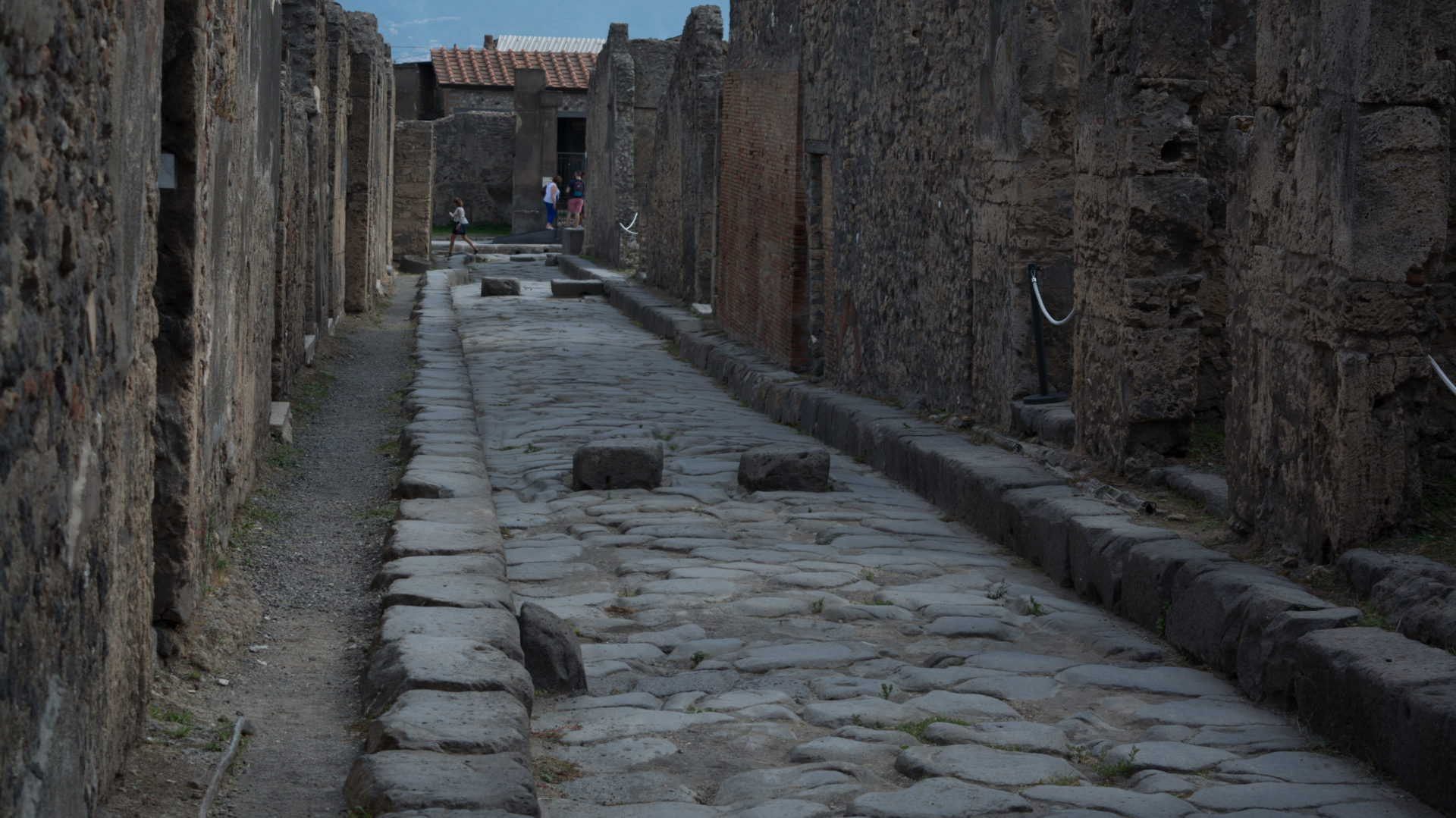After finishing our visit to Herculaneum we headed over to the Antiquarium at Boscoreale. This is a small museum situated on the site of an ancient wine-producing villa. As soon as we arrived at the site we could see the excavated Roman house, with a replanted vineyard:
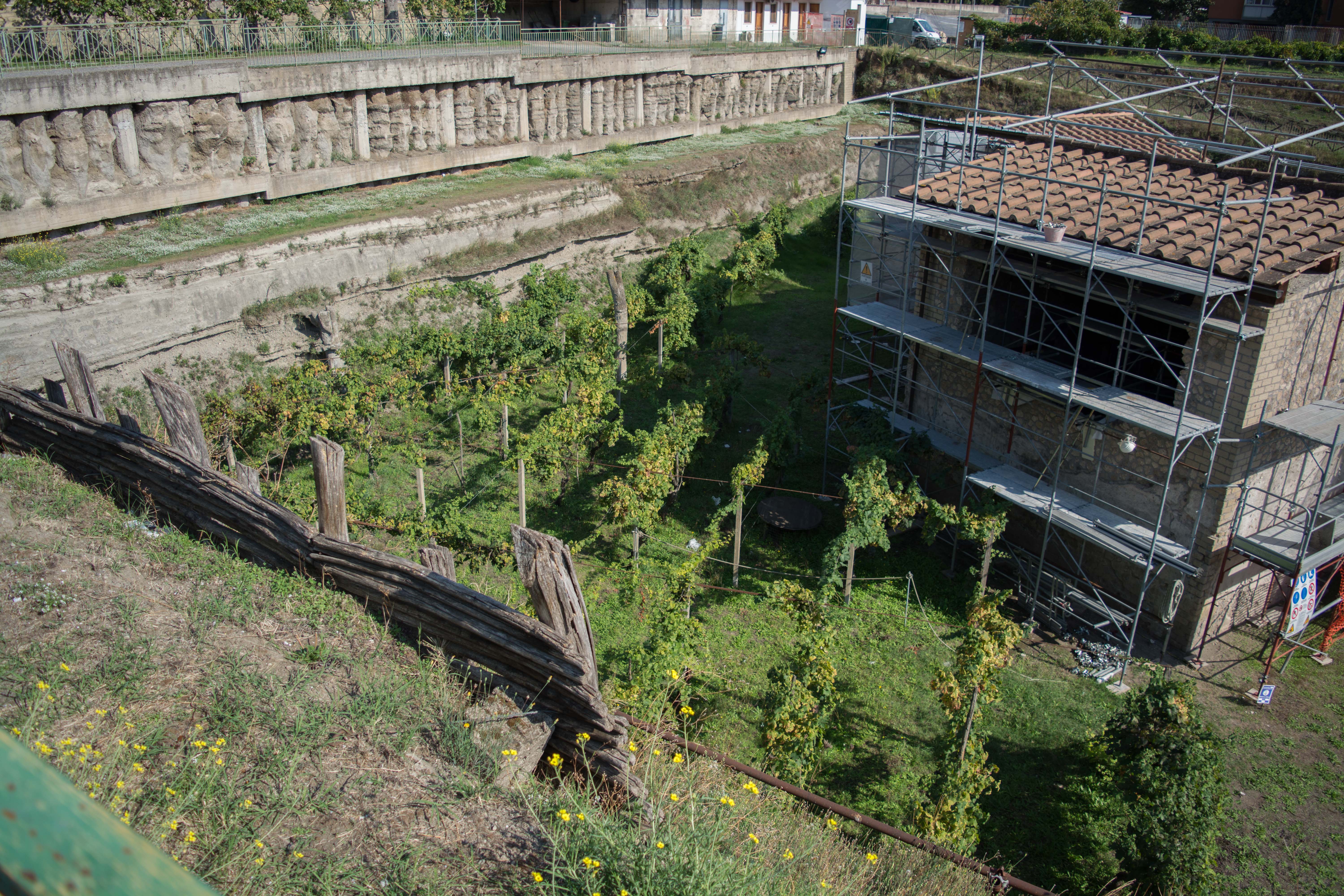
Tony explained that the people here would bury large clay jars in the ground and ferment the wine inside of them. The jars would not be enclosed or kept under an awning, they were simply sealed and left in the open air. The ancient Roman writer Pliny is well known for having remarked that, in his opinion, the best wine in the world was the kind made in Campania in jars that were left in open air. This is one of the villas where the wine Pliny described would have been made. It is possible that Pliny himself drank some of the wine that was made here.
This model shows how the villa would have looked at the time:
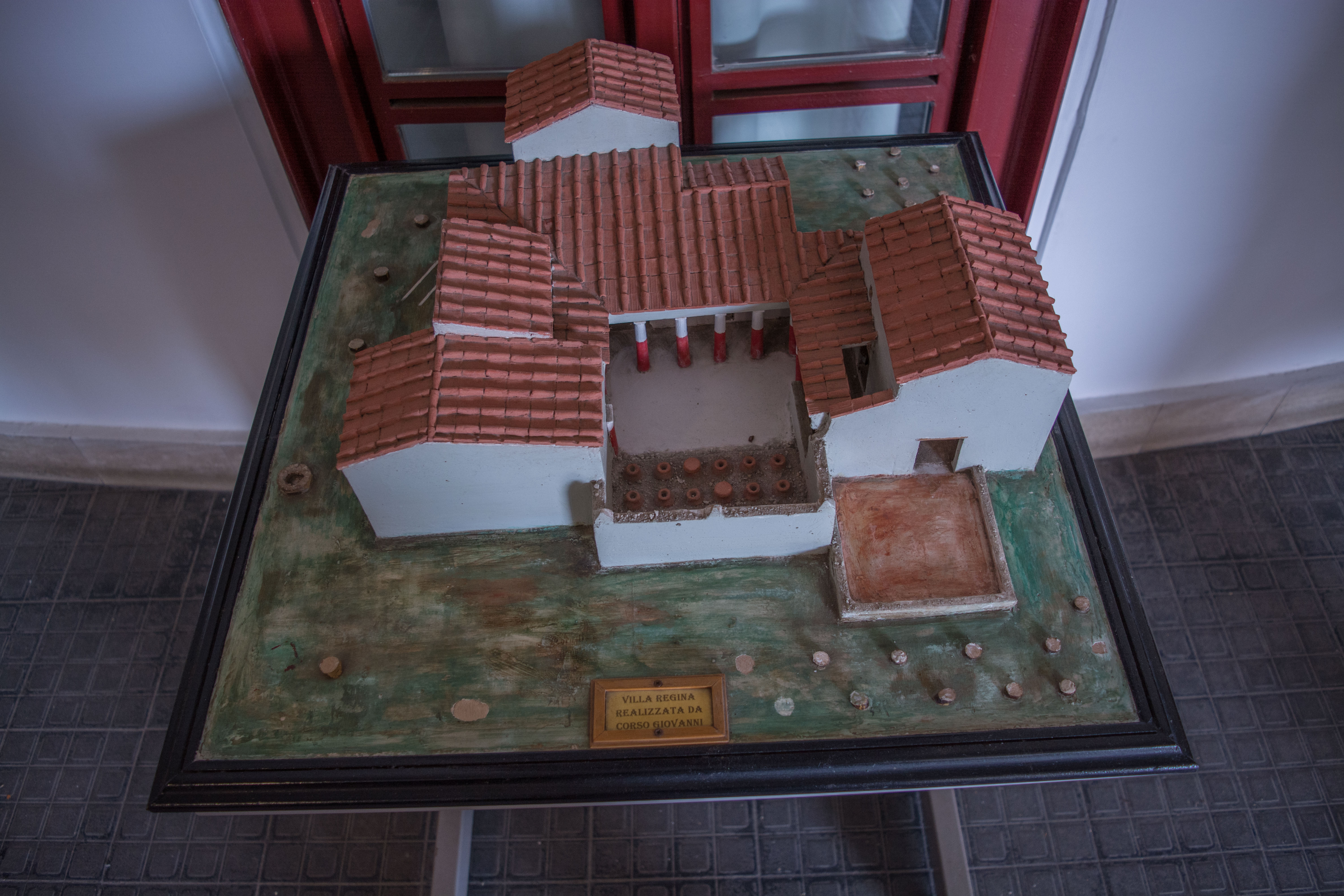
There is also a tabletop model of the ruins of Pompeii, with the amphitheater at the bottom right. This model makes it very easy to see which sections have been excavated and which sections have not:
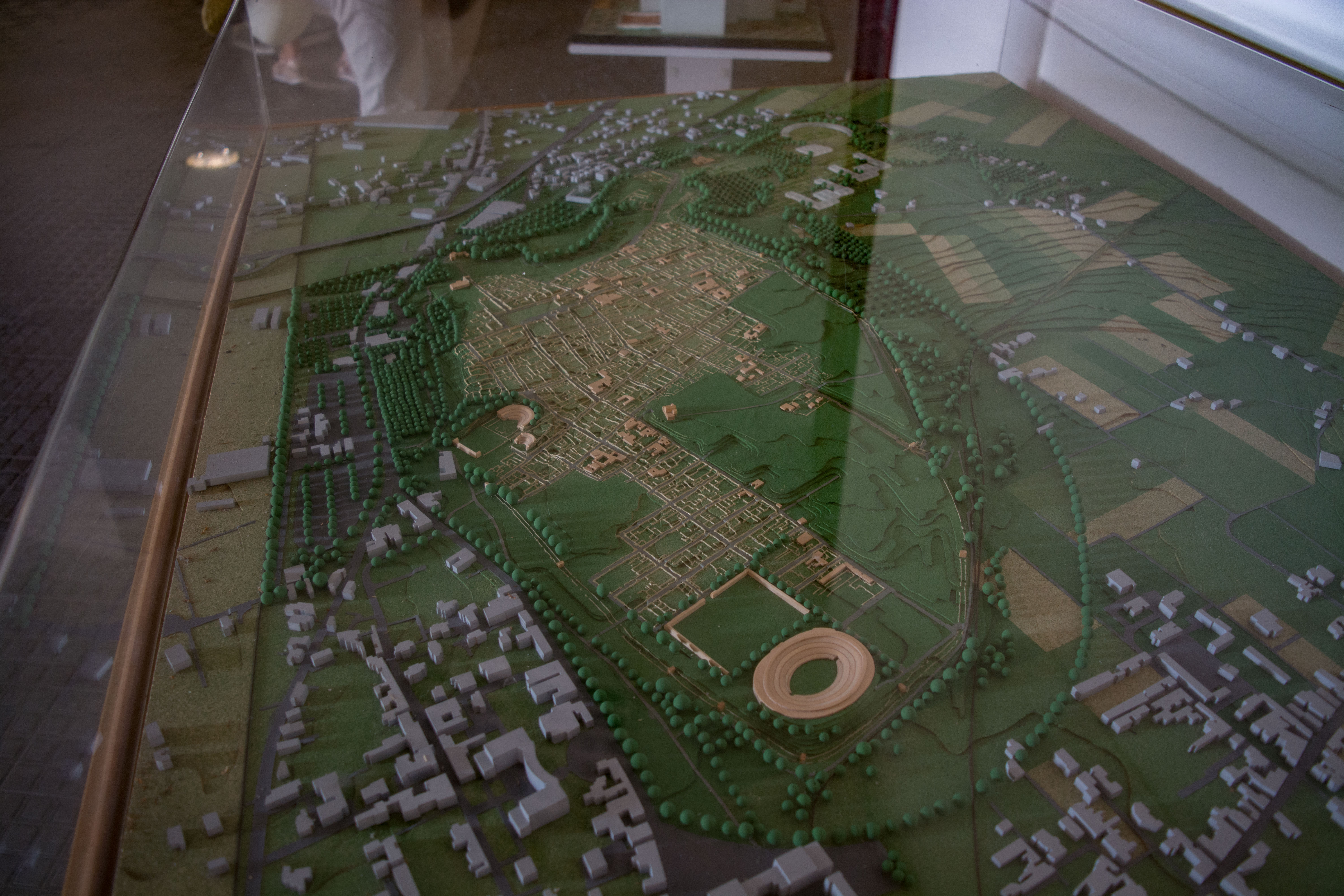
Inside the Antiquarium (or museum), we found a collection of ancient Roman artifacts that gave us a window into the day-to-day lives of ordinary Romans. Many of these items are from Pompeii and Herculaneum. Seeing them in person made it much easier to relate to the people of this time, because many of these items were easily recognizable and almost eerily modern-looking. Here are some fish hooks:
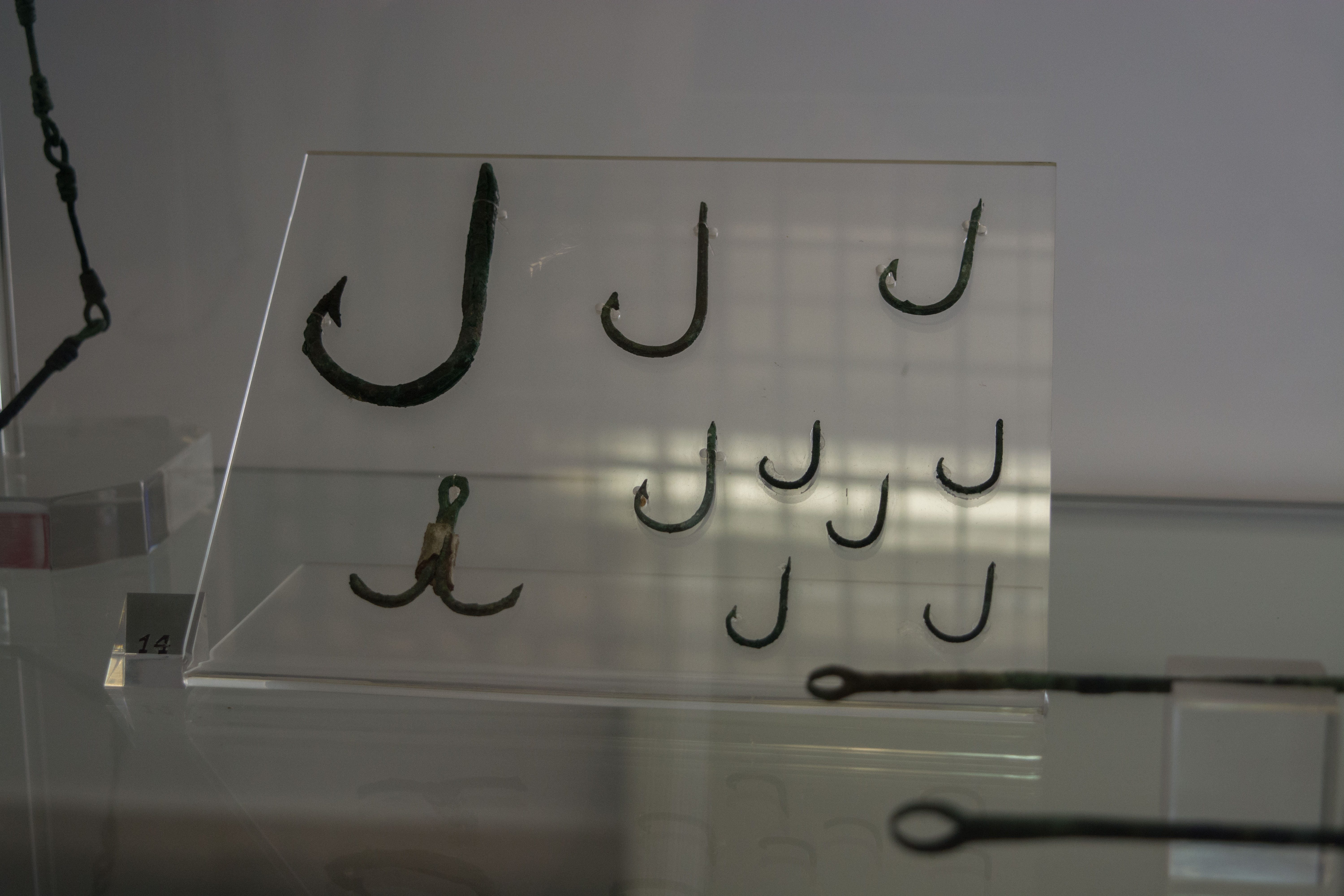
And another fish hook, this one with a leader:
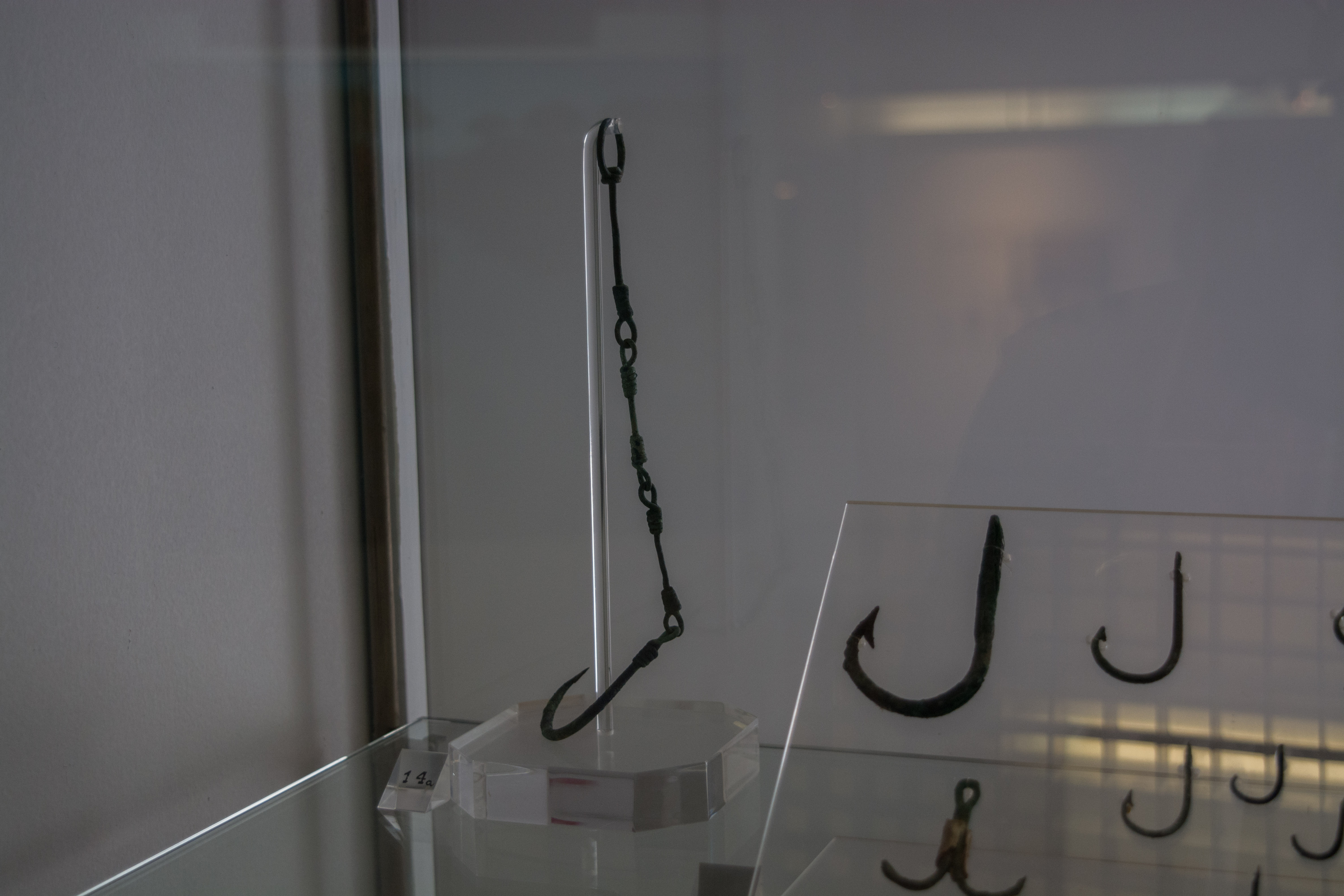
This is the inside of a jar that once contained garum, a fish sauce that was common in Rome. Garum was made from the salted and fermented intestines of fish, and once the liquid sauce was all gone the remains would be left at the bottom of the jar, and those remains are what can be seen here:
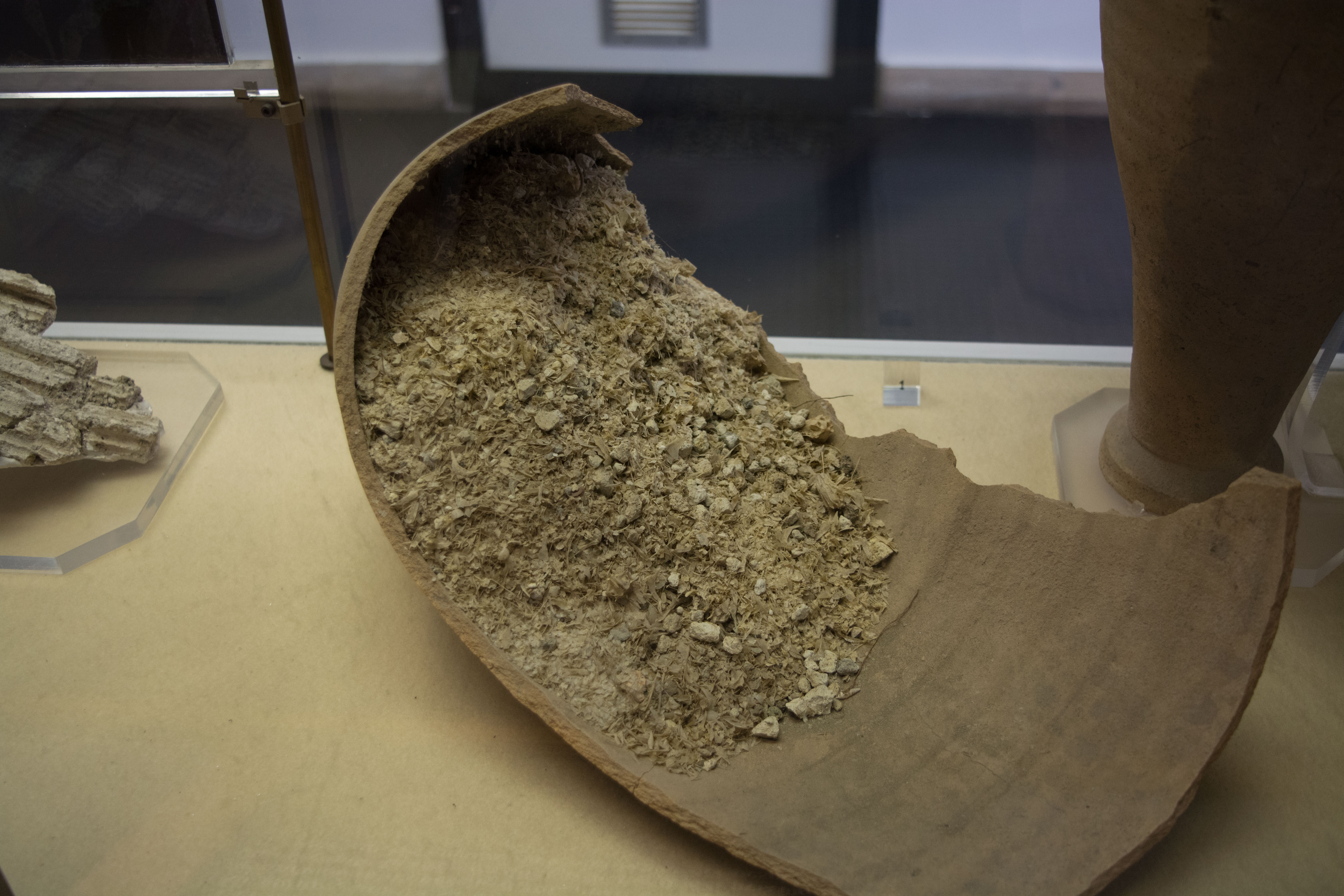
Garum was used as a condiment on a great variety of Mediterranean dishes, and was produced and exported all around the region. It would likely have been as common a sight for the average Roman as ketchup and mayonnaise are for the average American. Kosher versions were known to have been produced to cater to the Jews living in the region. One citizen of Pompeii, a man named Umbricius Scaurus, made his considerable fortune by producing and selling garum (although his factory has never been discovered).
In the corner of this room is a piece of Roman surveying equipment. The staff explained to us that the Romans would use the four hanging plumb bobs to find a perfect 90-degree angle, and then by looking down the lines they could use a separate rope of a specific length to mark out two boundaries at perfect right angles to each other. This required several people to work together, but was very accurate considering the primitive tools that were available. The picture behind the surveying tool shows an example of how it would be used:
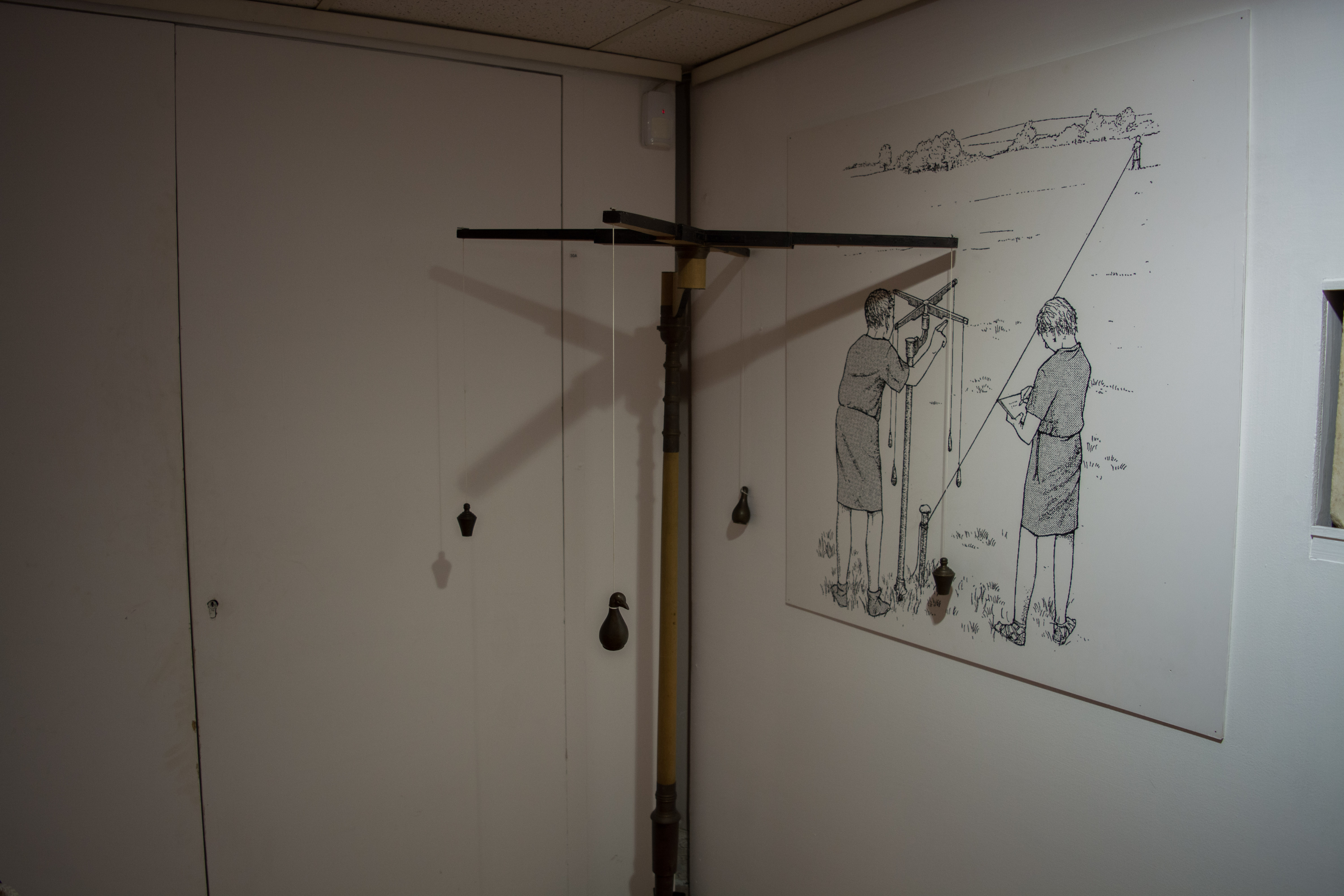
There were also some dice, made from bone. Some Roman dice were known to be “loaded” with lead weights in order to trick gamblers and tip the odds in the house’s favor:
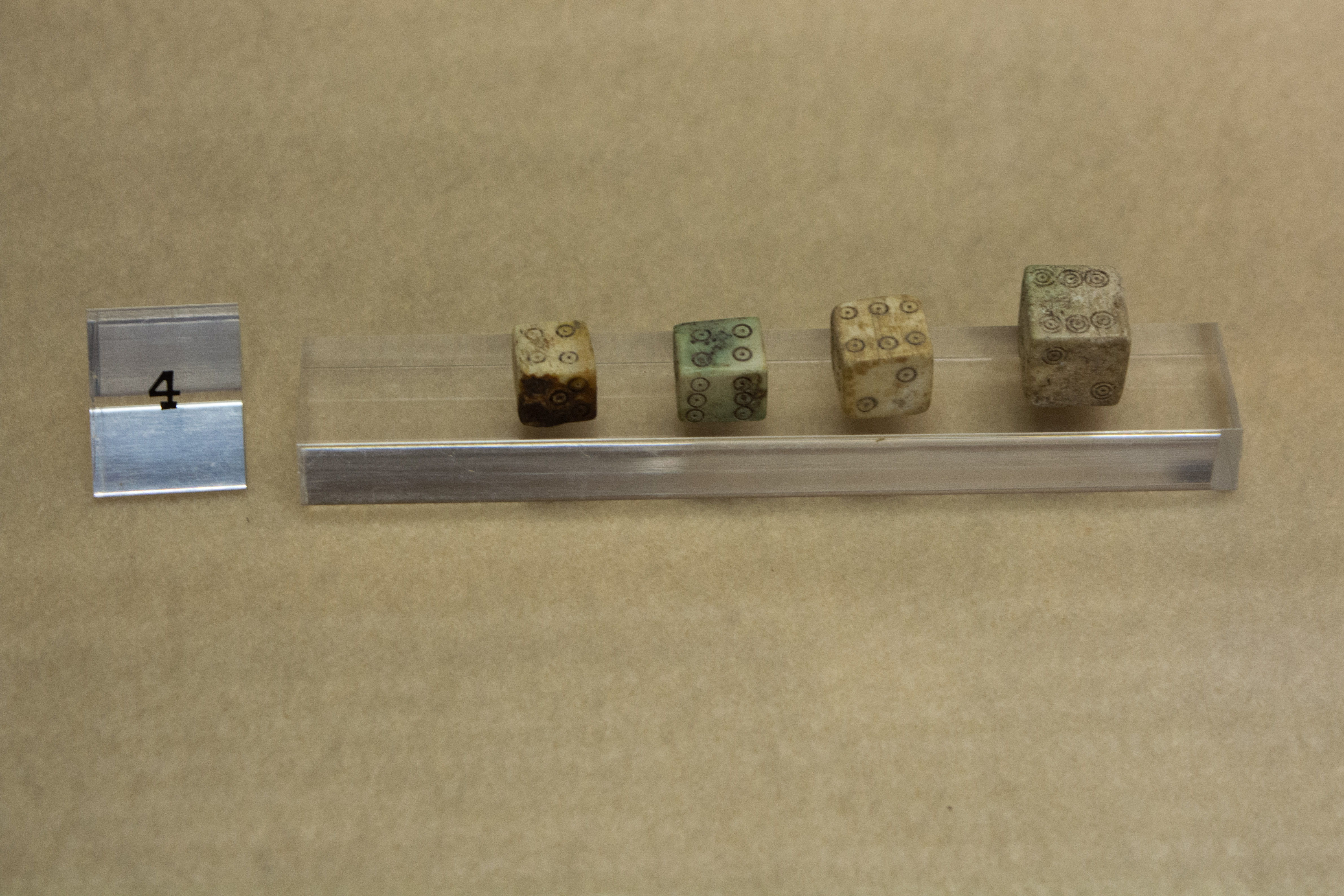
In the same case was a clay writing tablet:
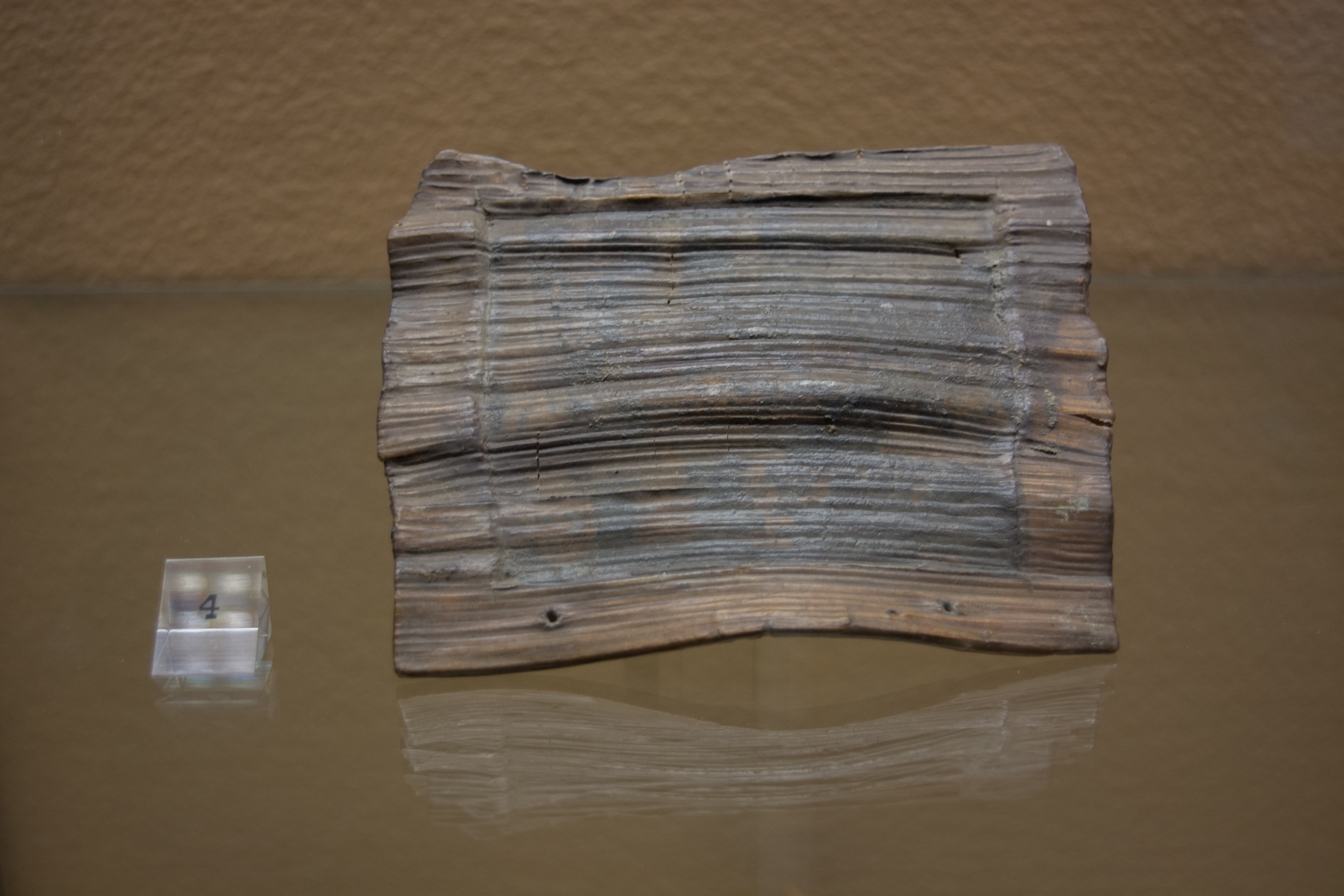
Nearby were some nuts:
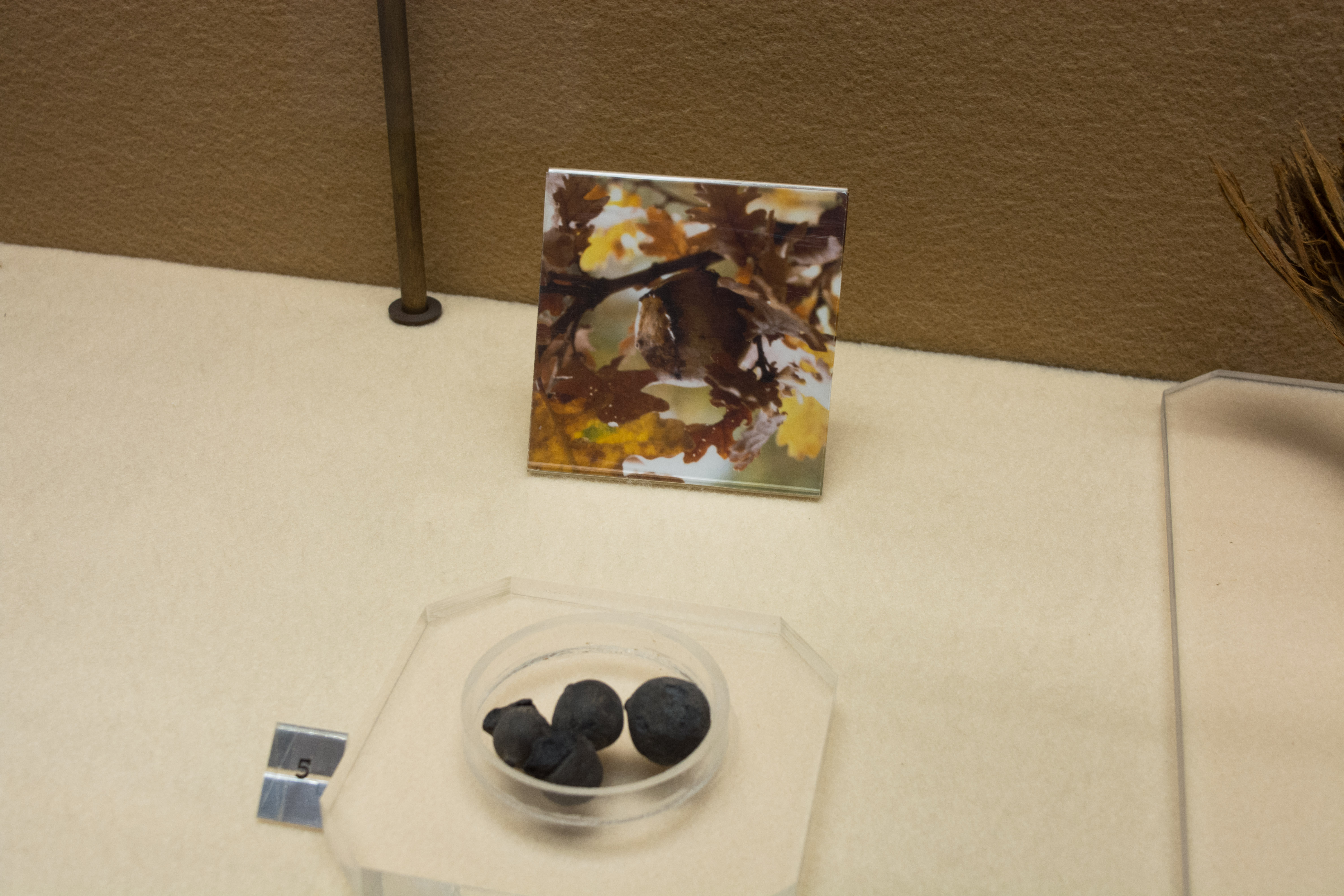
And a clay birdfeeder:
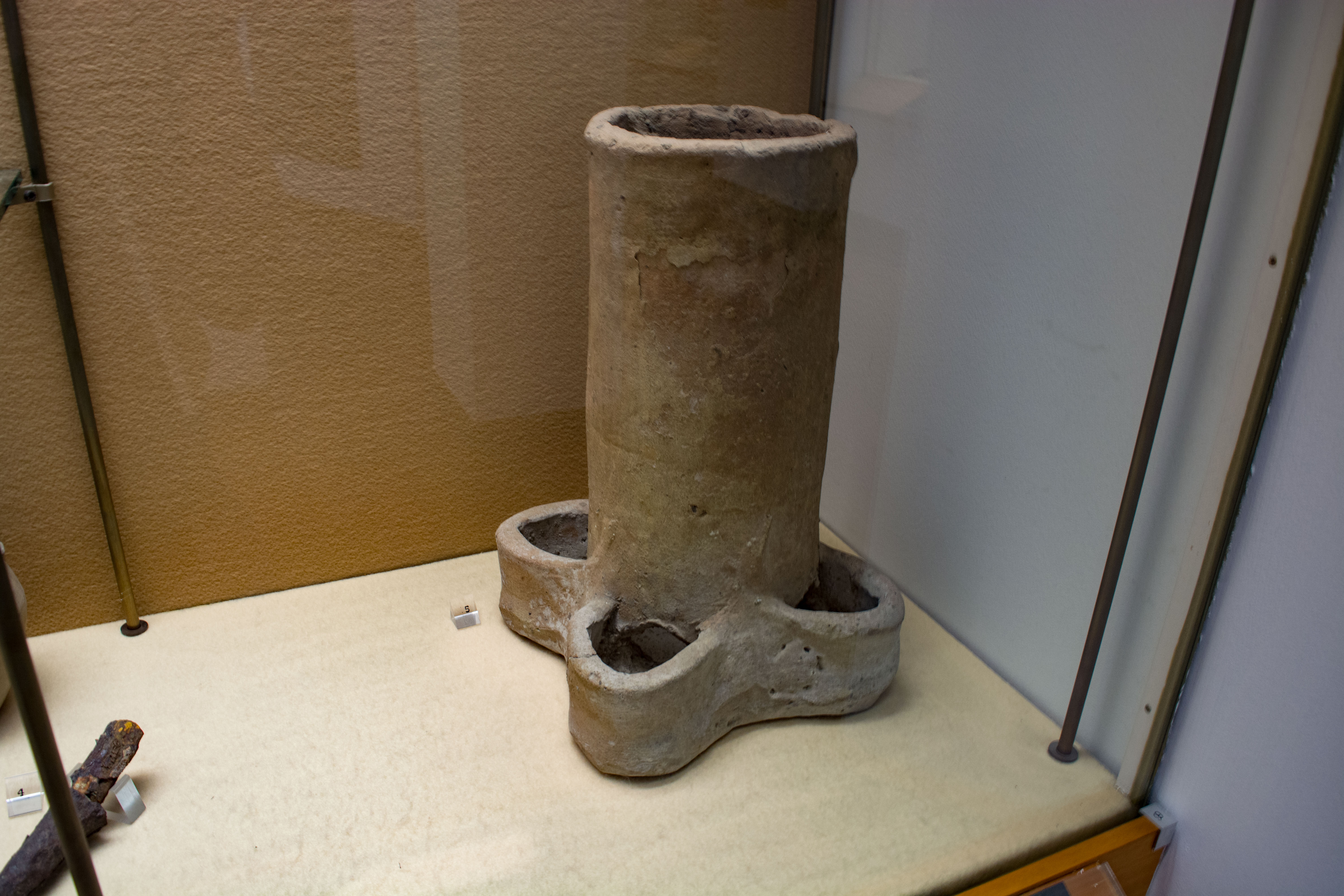
There was also a loaf of bread from Herculaneum, similar to the loaf we saw earlier:
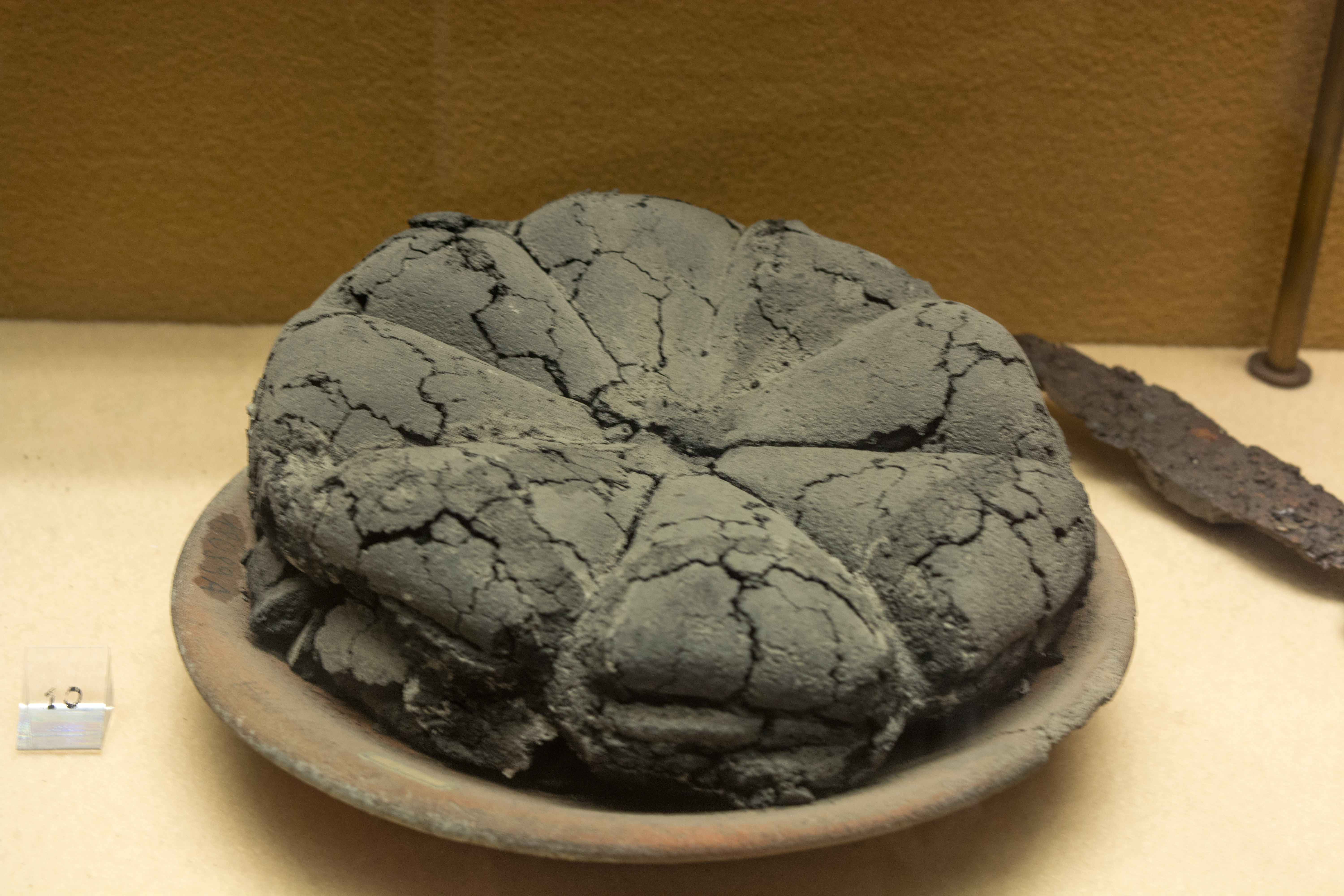
And a collection of grains, which we could all recognize:
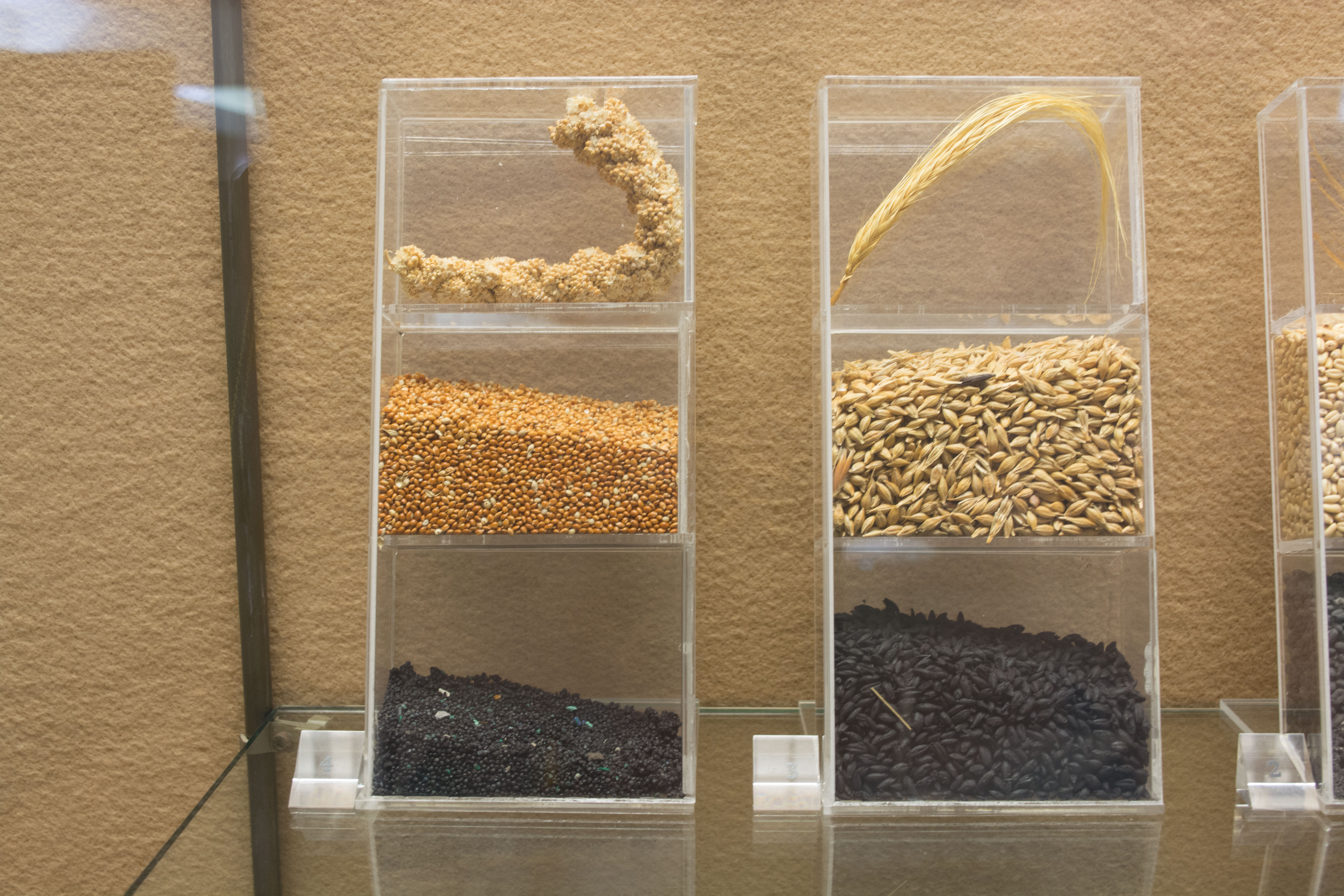
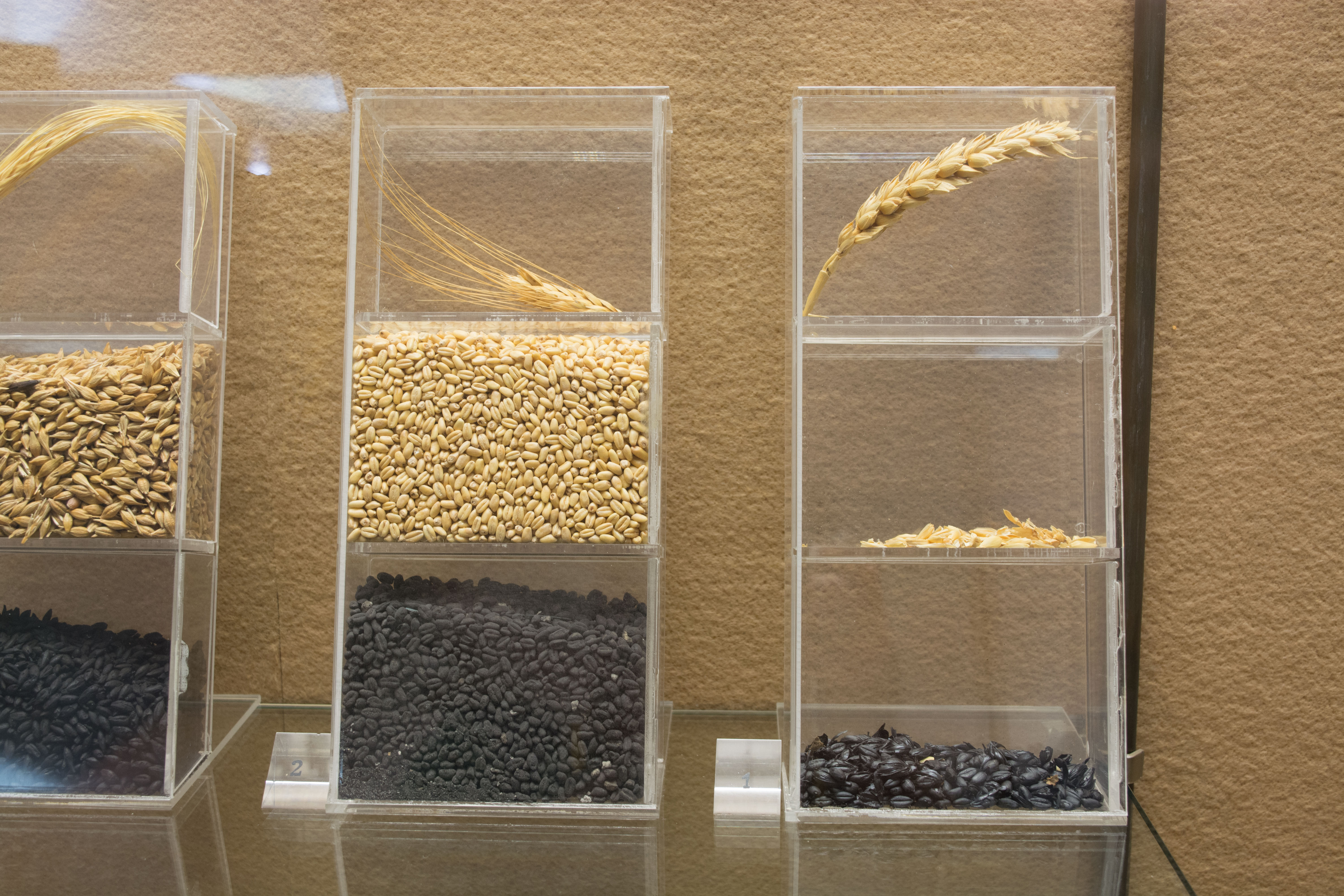
Nearby was a stone grinder, identical to the ones we saw in Pompeii but with the wooden parts rebuilt to make it easy to see how it would have looked in use:
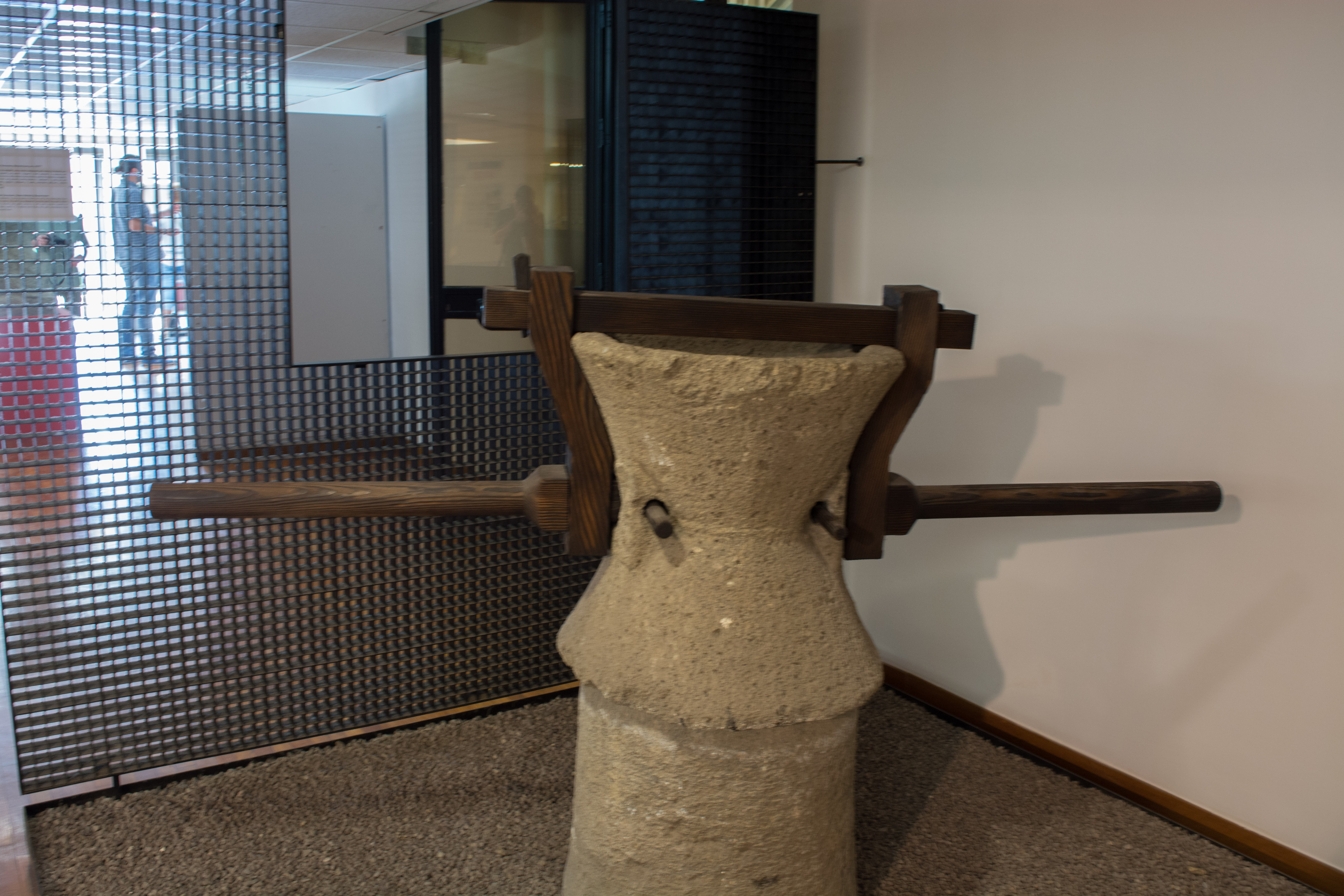
In the center of this room was a glass case filled with small everyday objects. Many of them looked so modern that it seemed like they could have been made relatively recently. Here are some tweezers:
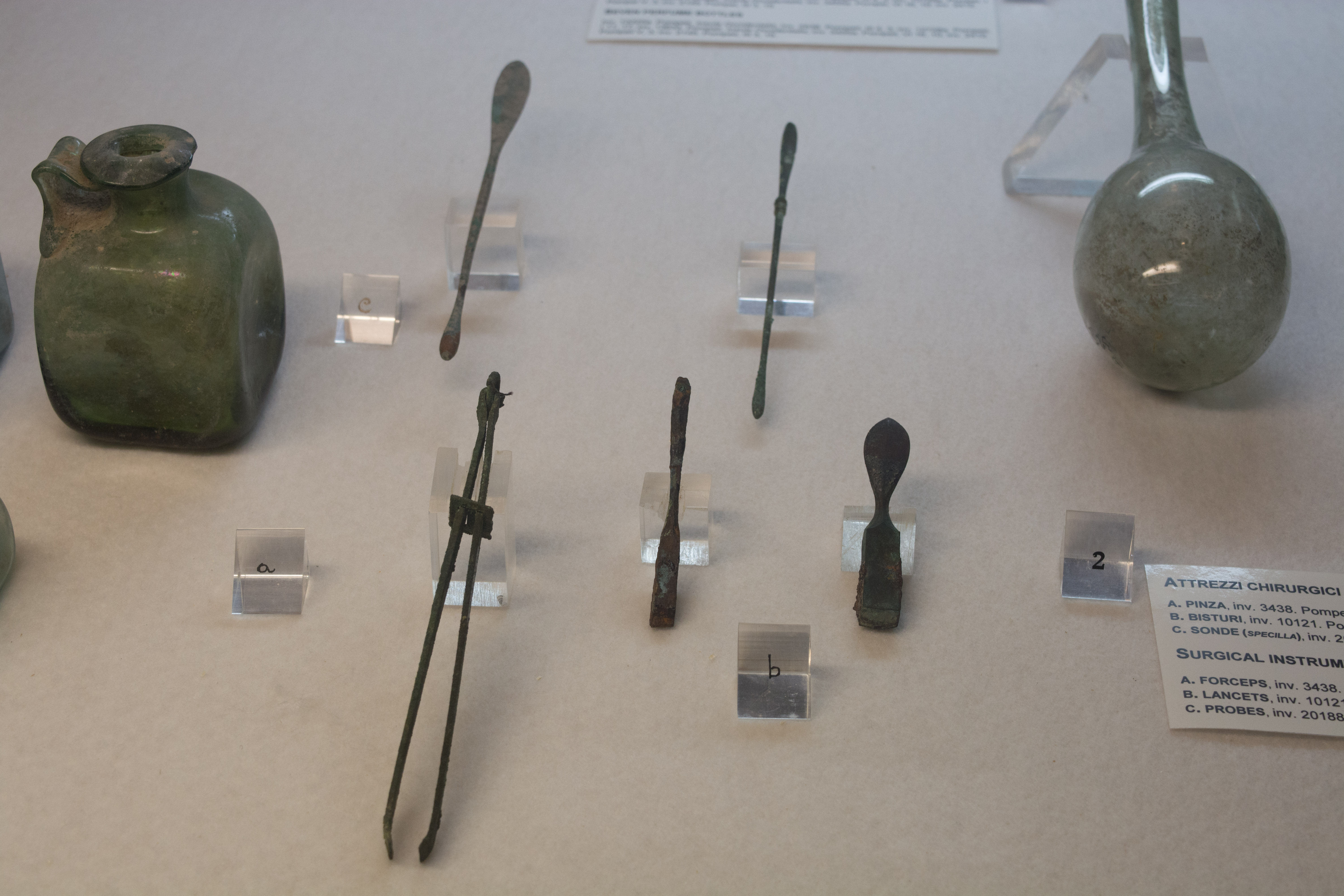
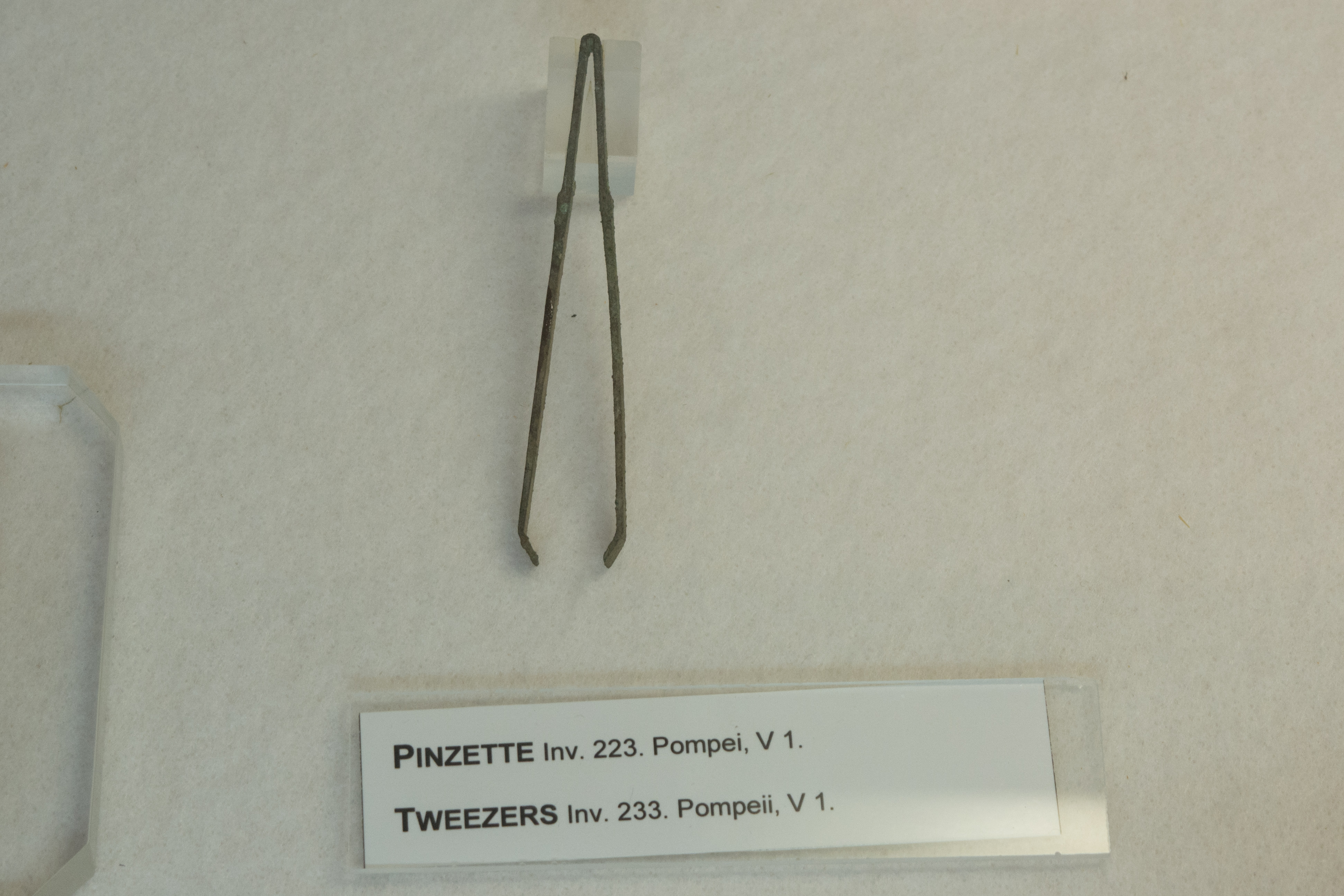
And a comb, with two sides just like our modern ones:
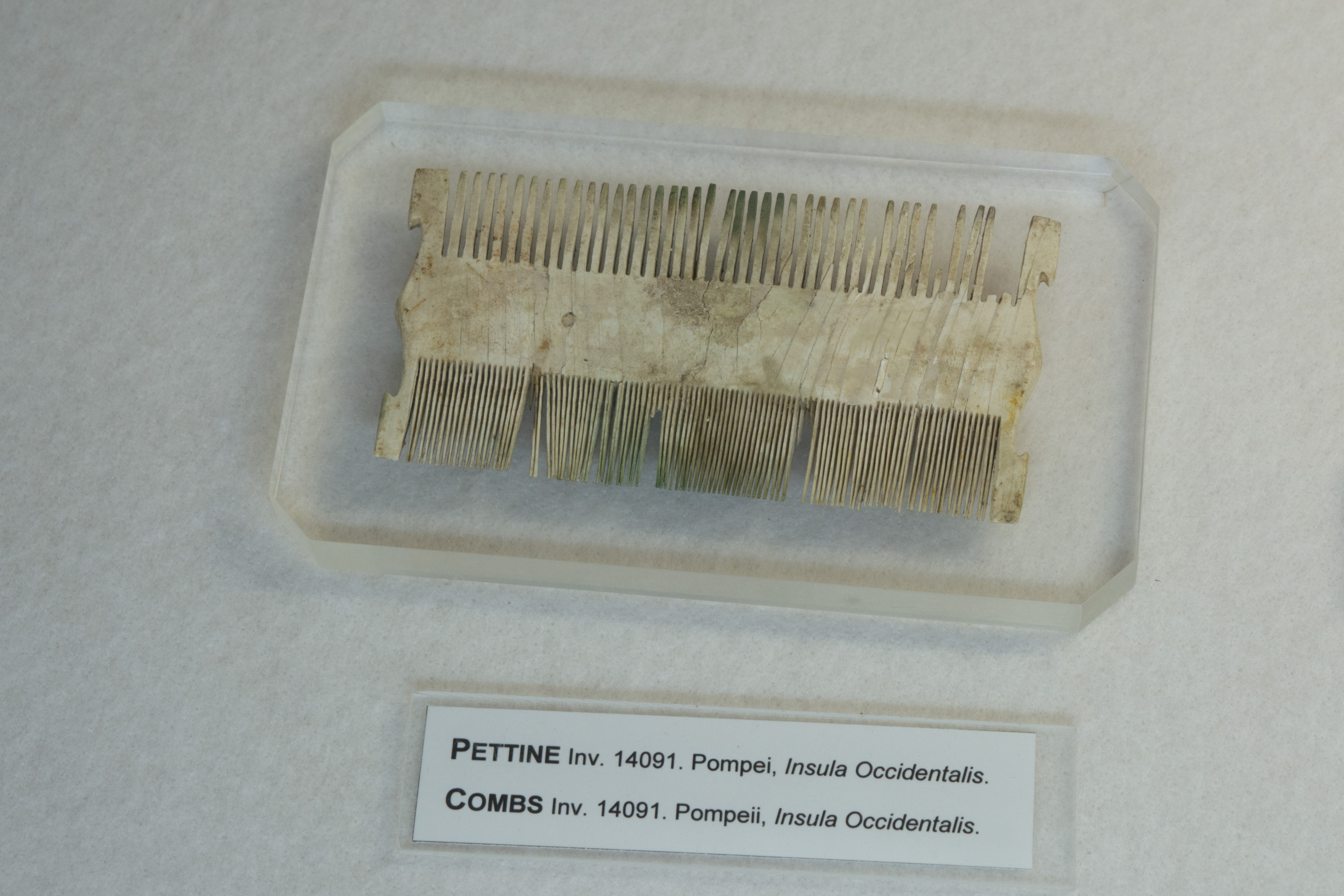
A handheld vanity mirror (facedown):

And some small glass jars that once held perfume:
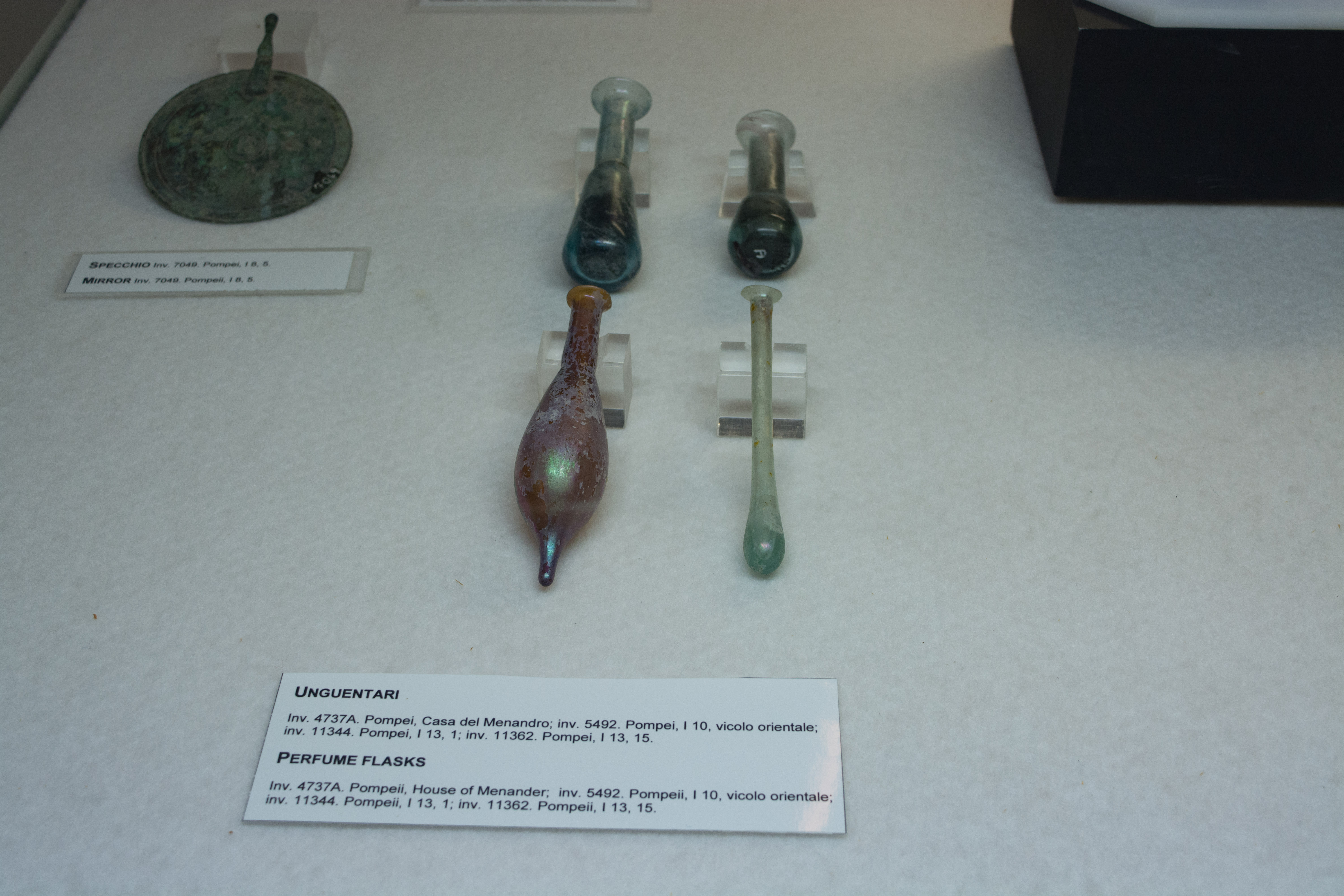
In the next room is a similar case, with some carbonized rope from Herculaneum:
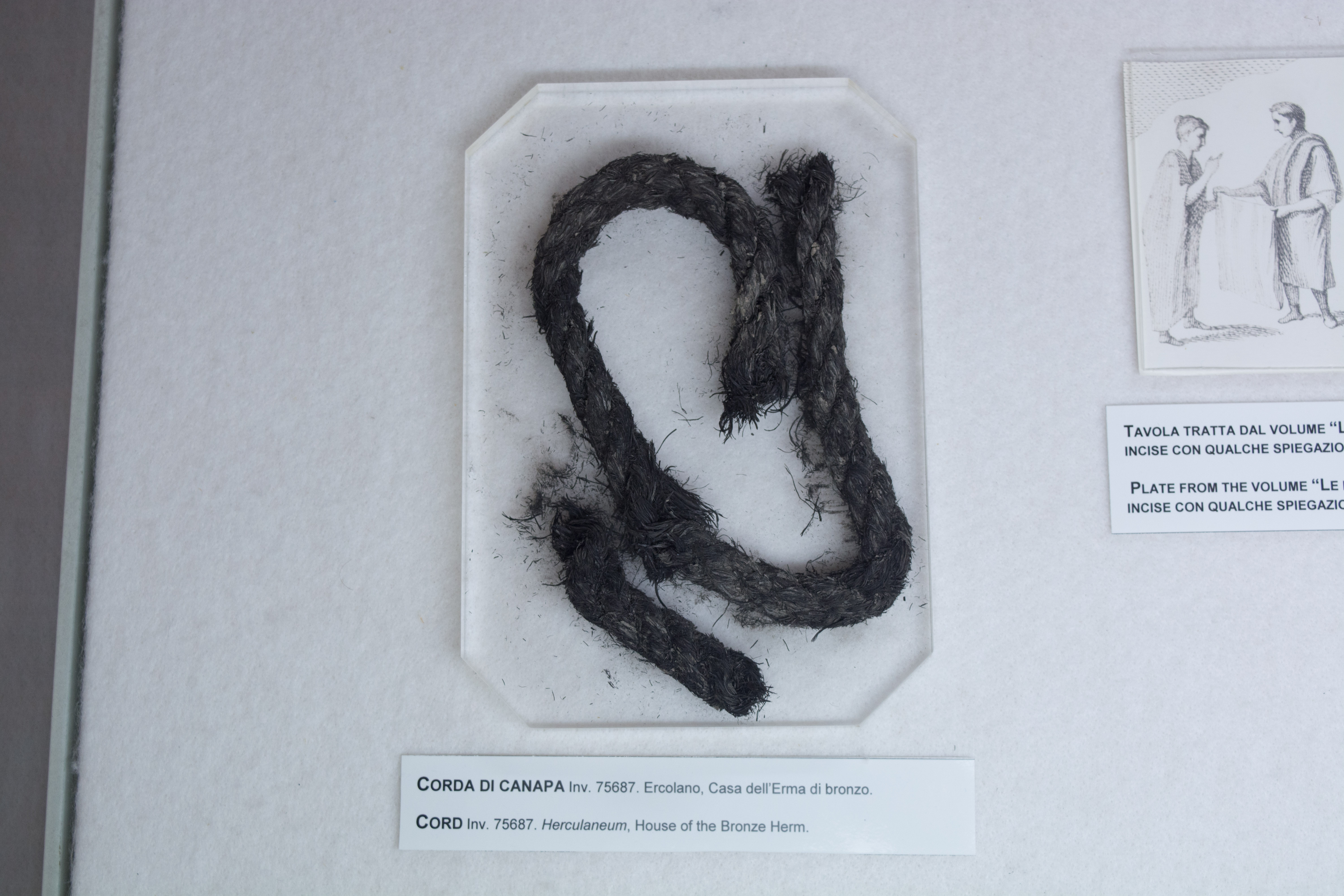
Some knitting needles:
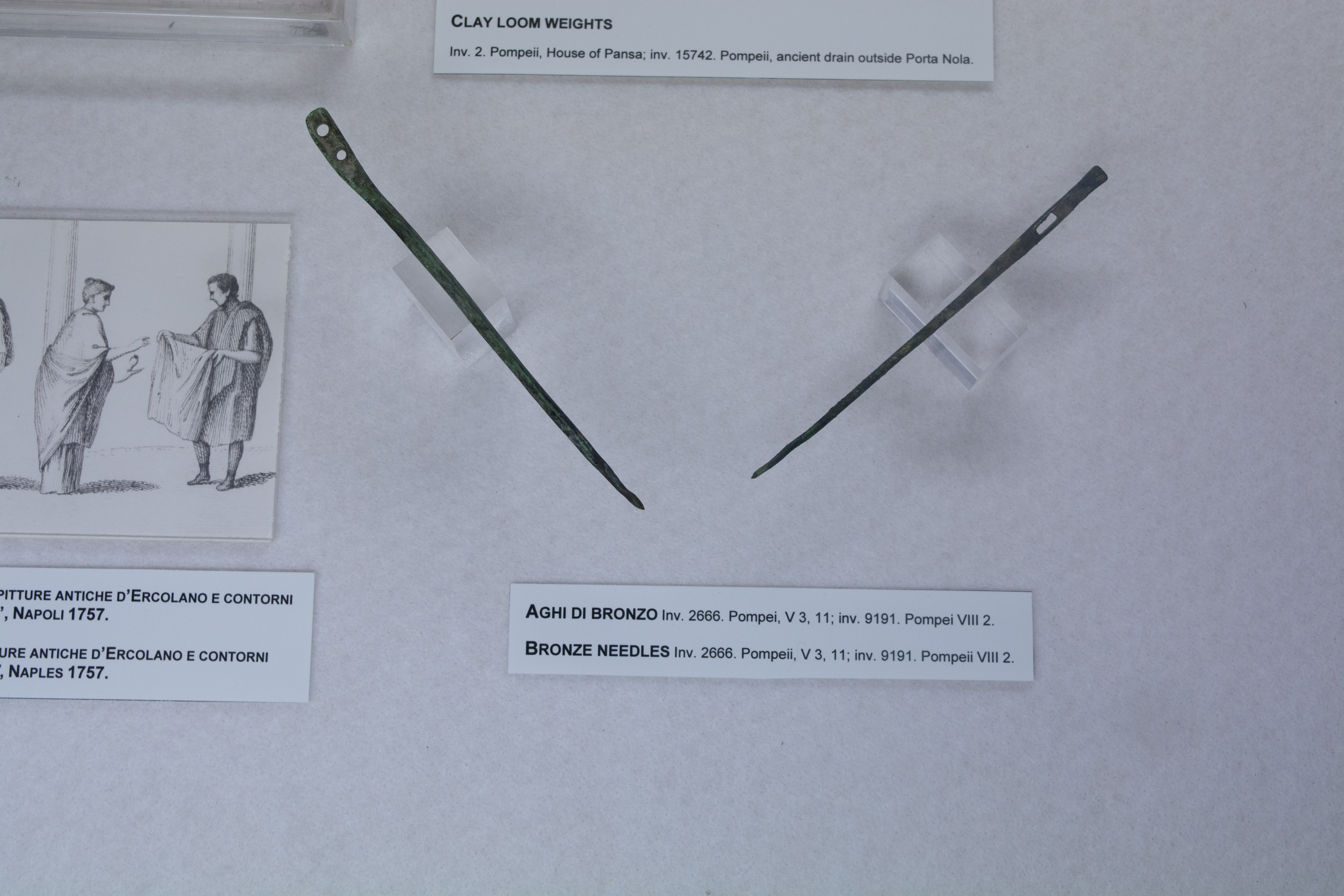
Some loom weights:
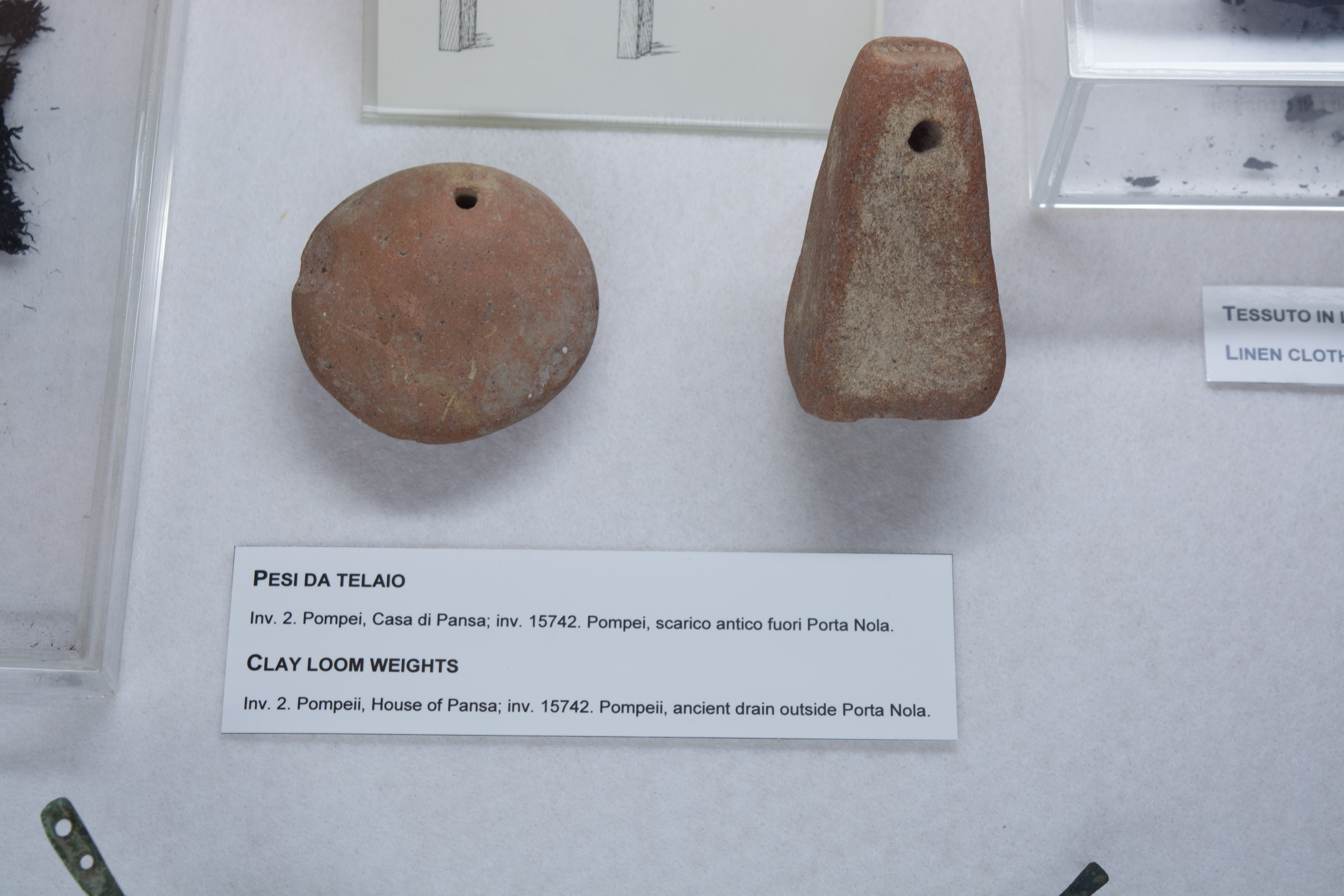
And the carbonized sole of a Roman shoe (also from Herculaneum):
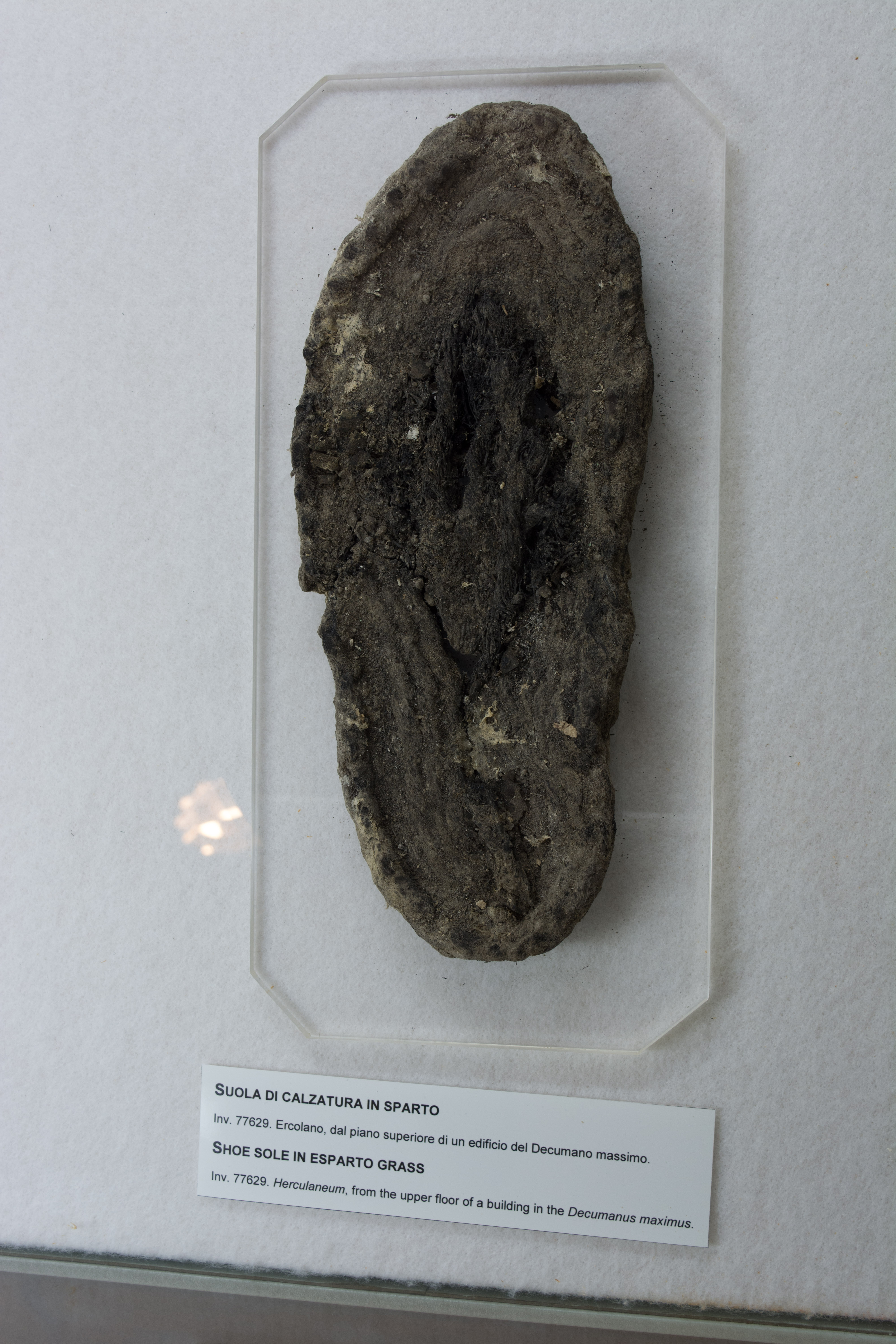
The walls of this room have a lengthy display full of hand tools, like this axe:
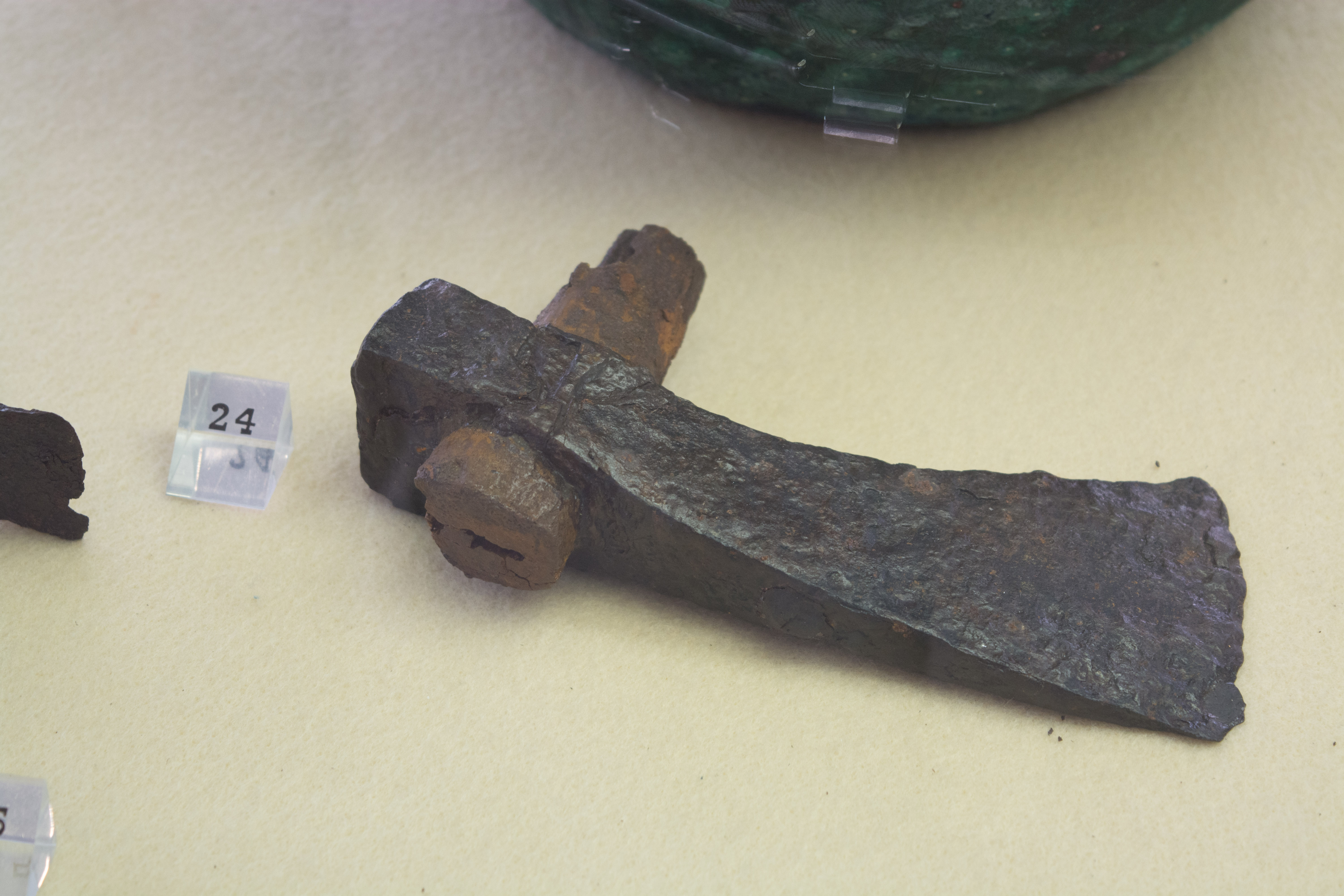
A knife with a handle made of animal bone:

And some metal belt buckles:

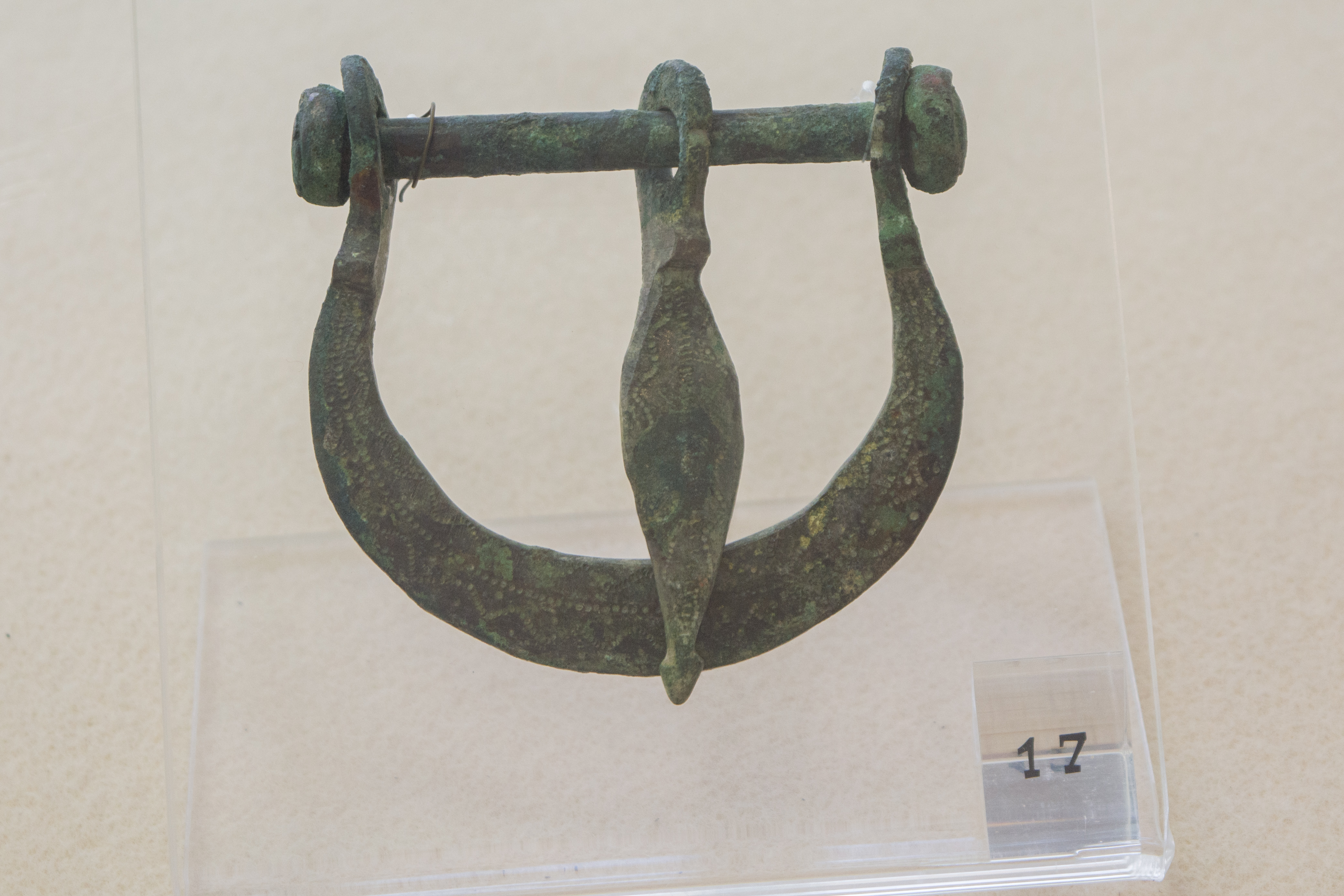
A prying tool similar to a modern claw hammer sits easily recognizable beside some shovel blades:
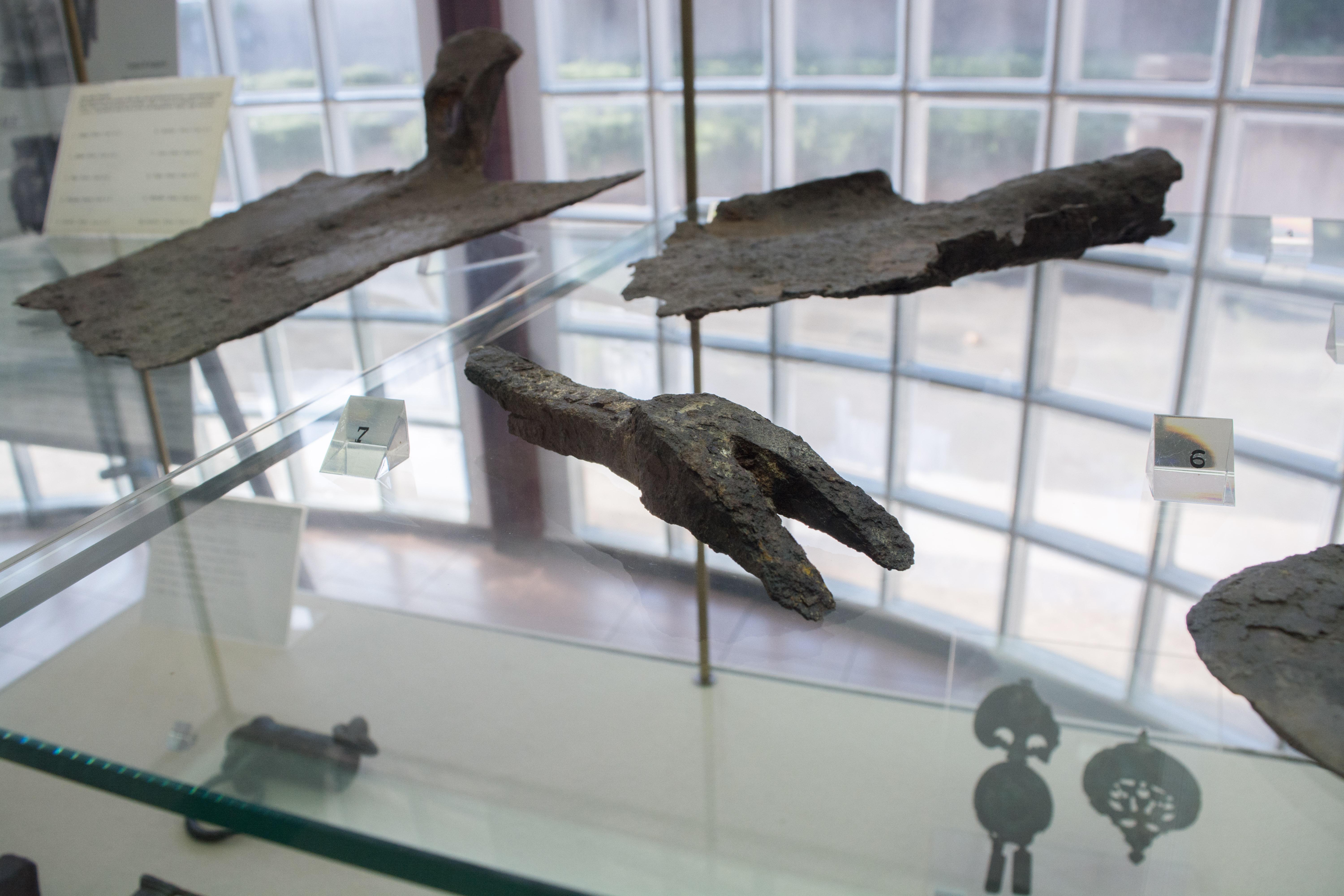
There are also some bread stamps, used to imprint the maker’s mark onto each new loaf:
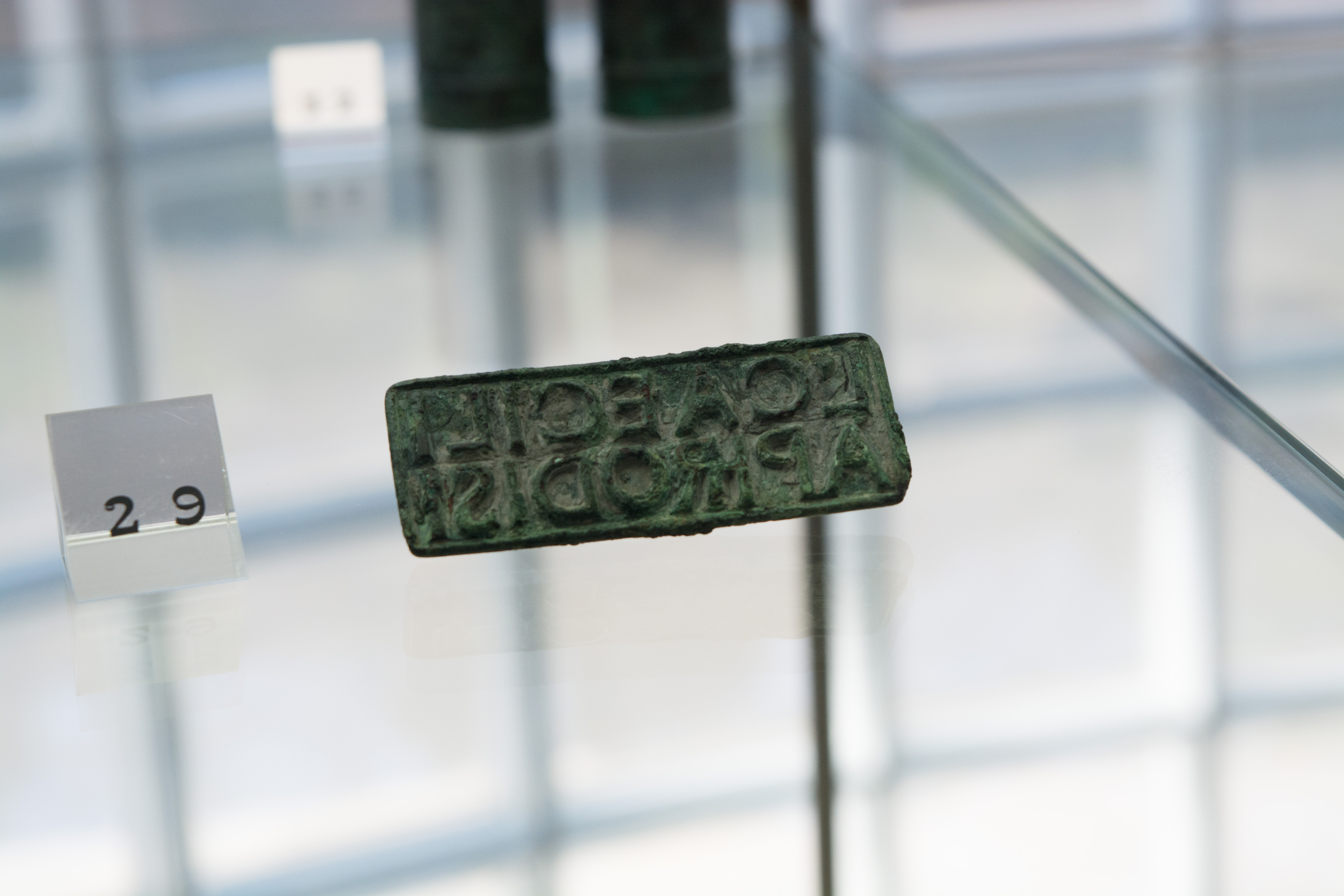
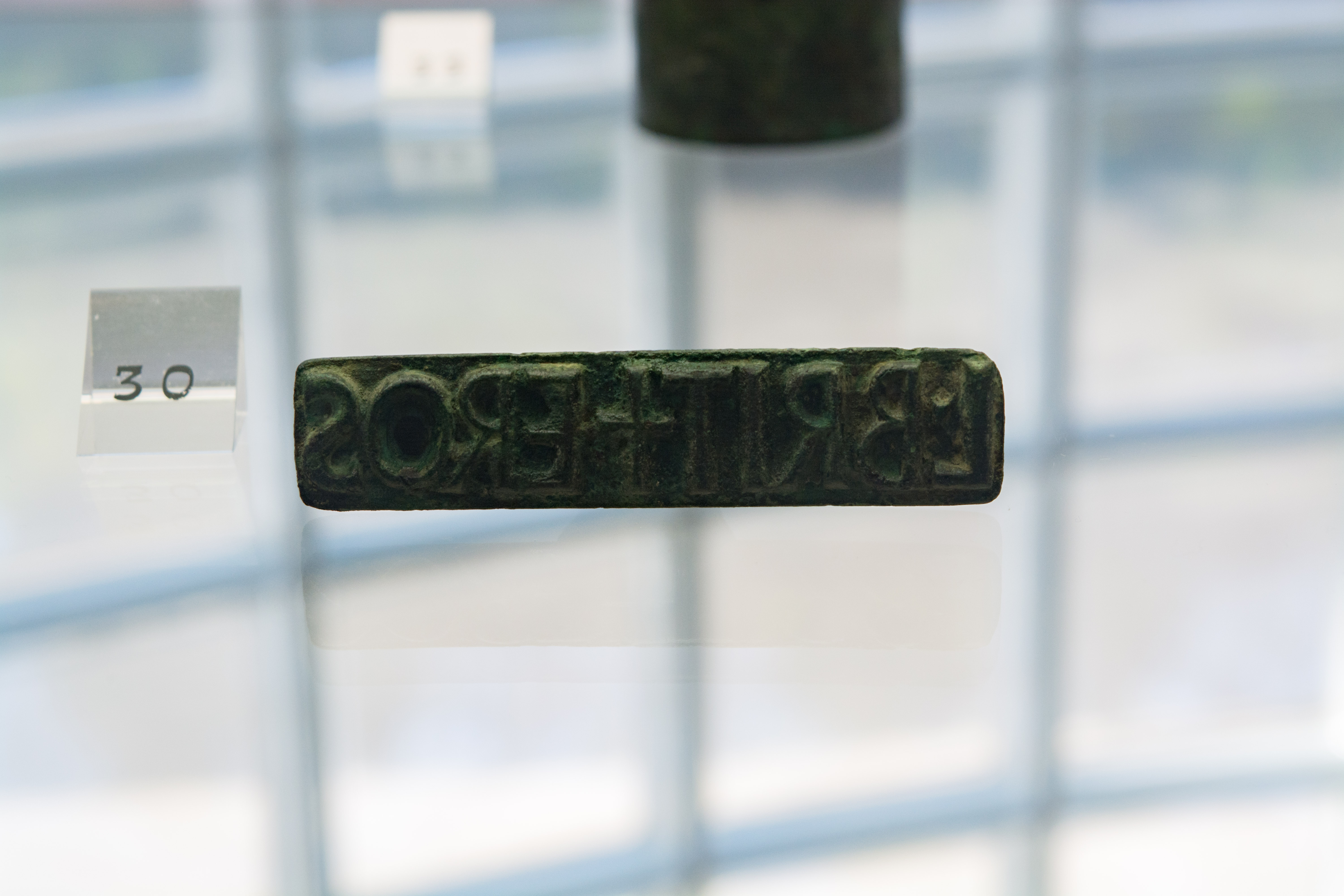
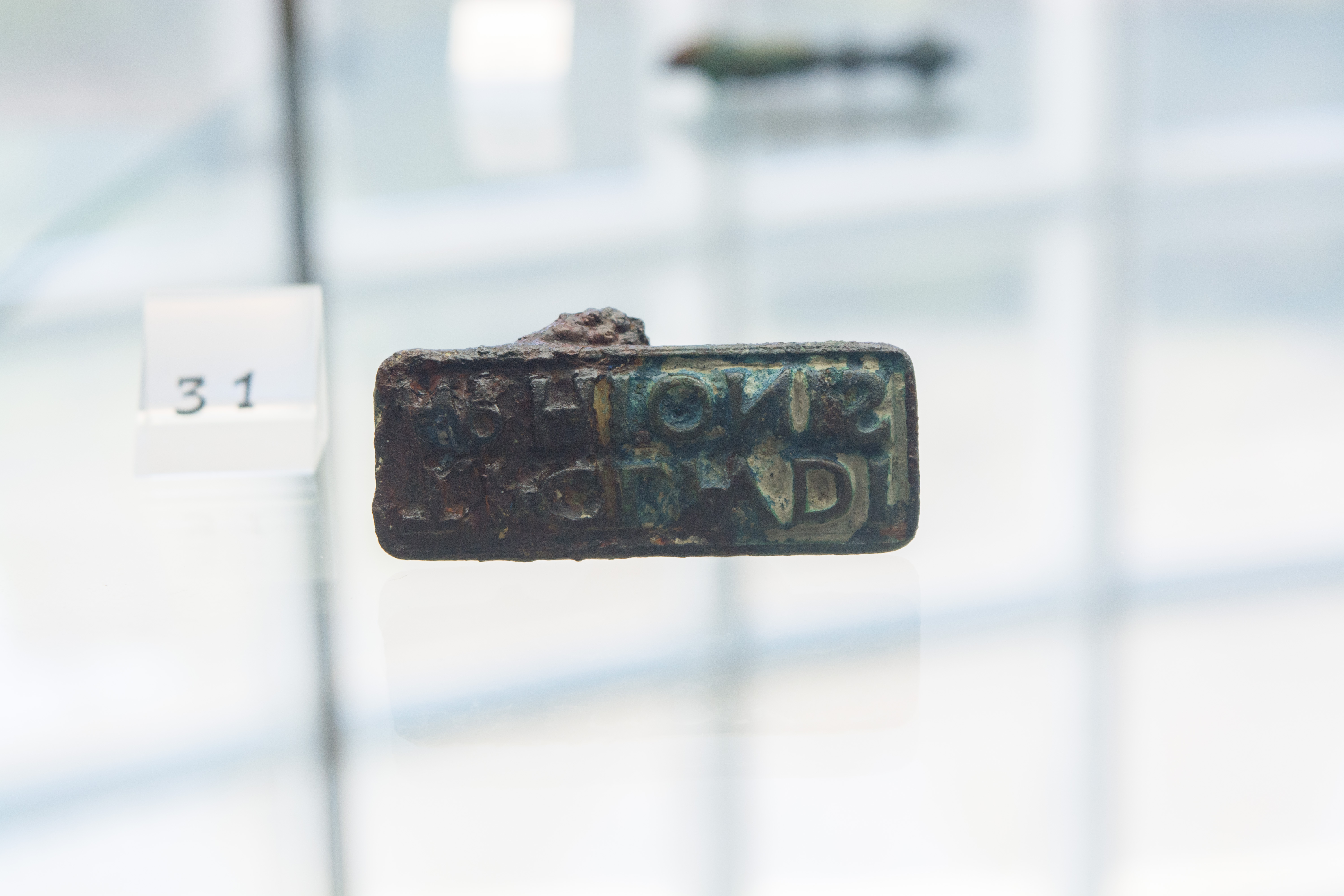
At the far end of the room, near the exit, is one of the large clay jars that once would have been used to ferment wine. The jar is much more impressive in person. It could hold up to 700 liters (or about 125 gallons) of wine:
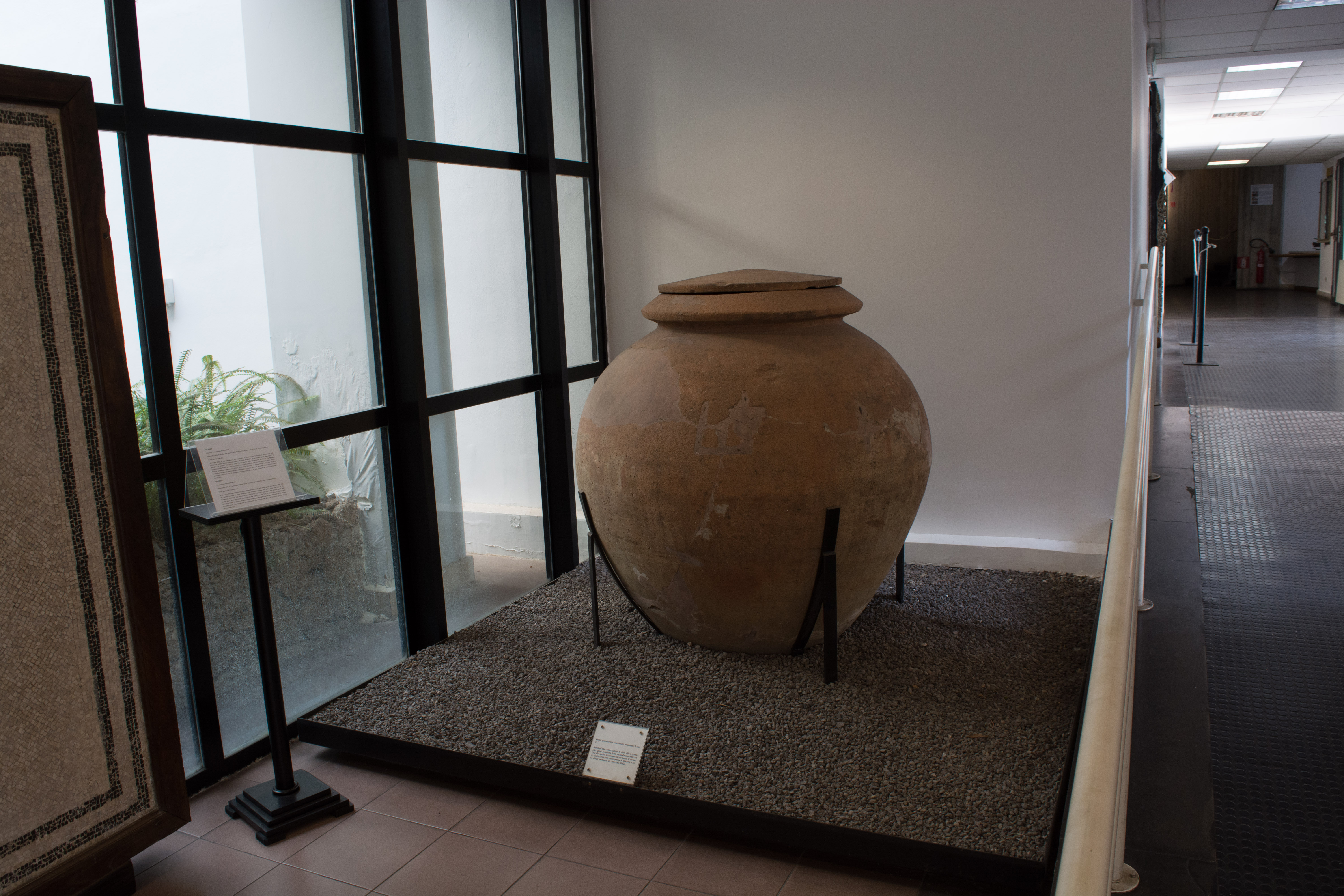
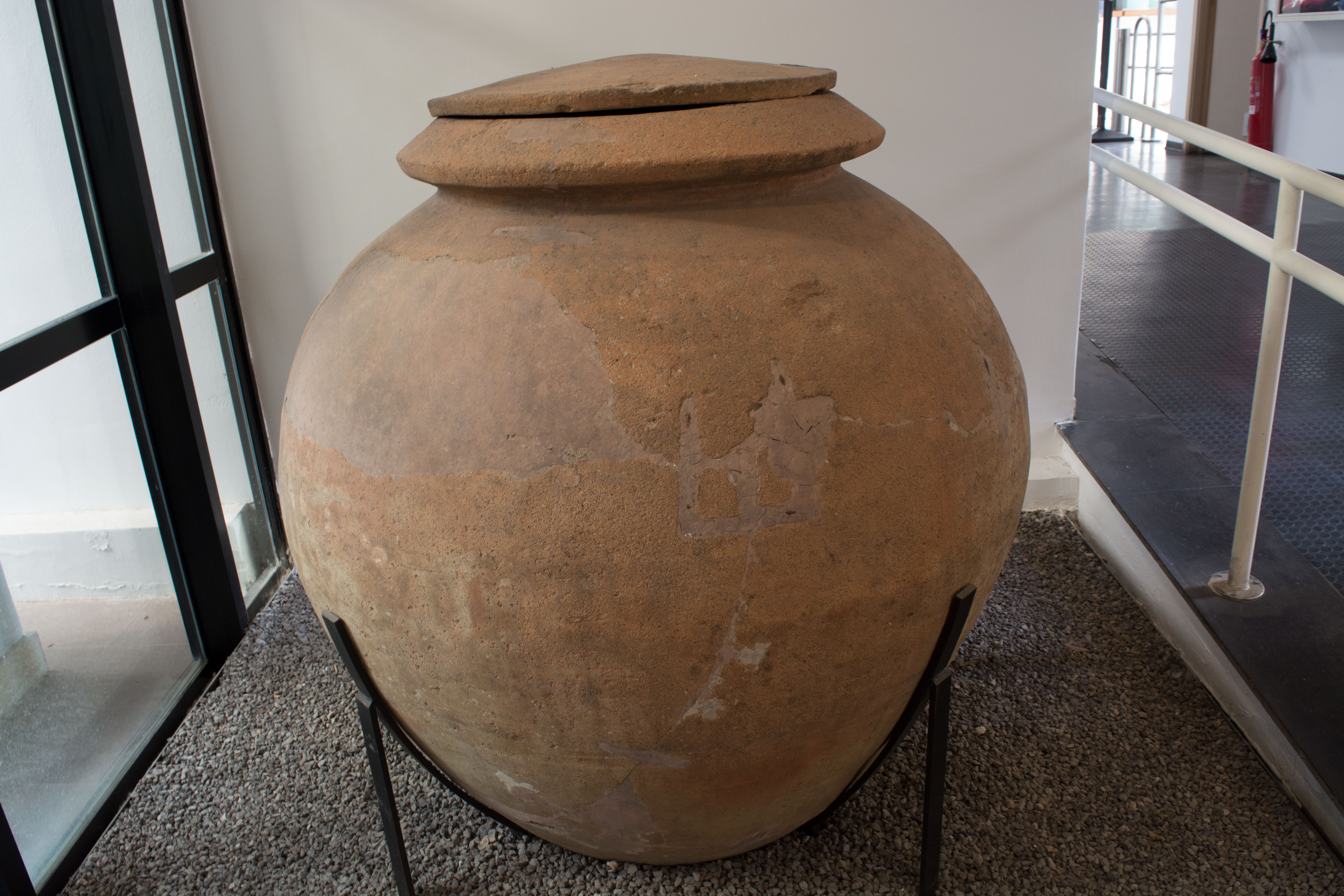
The center of the room is dominated by a scale model showing what the villa would have looked like when it was in use. Here is a small yard filled with these buried clay jars:
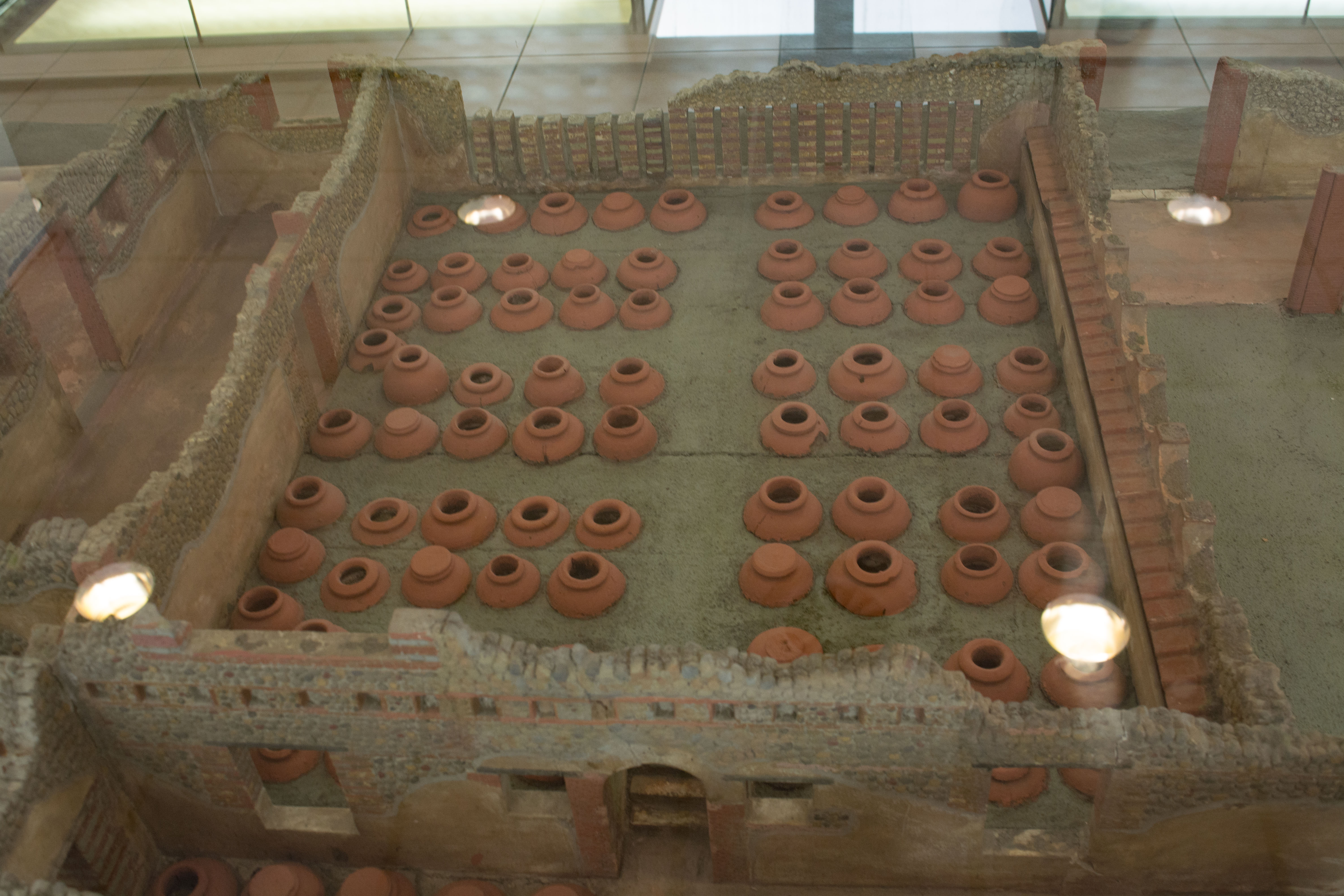
The wine press is located in a room nearby:
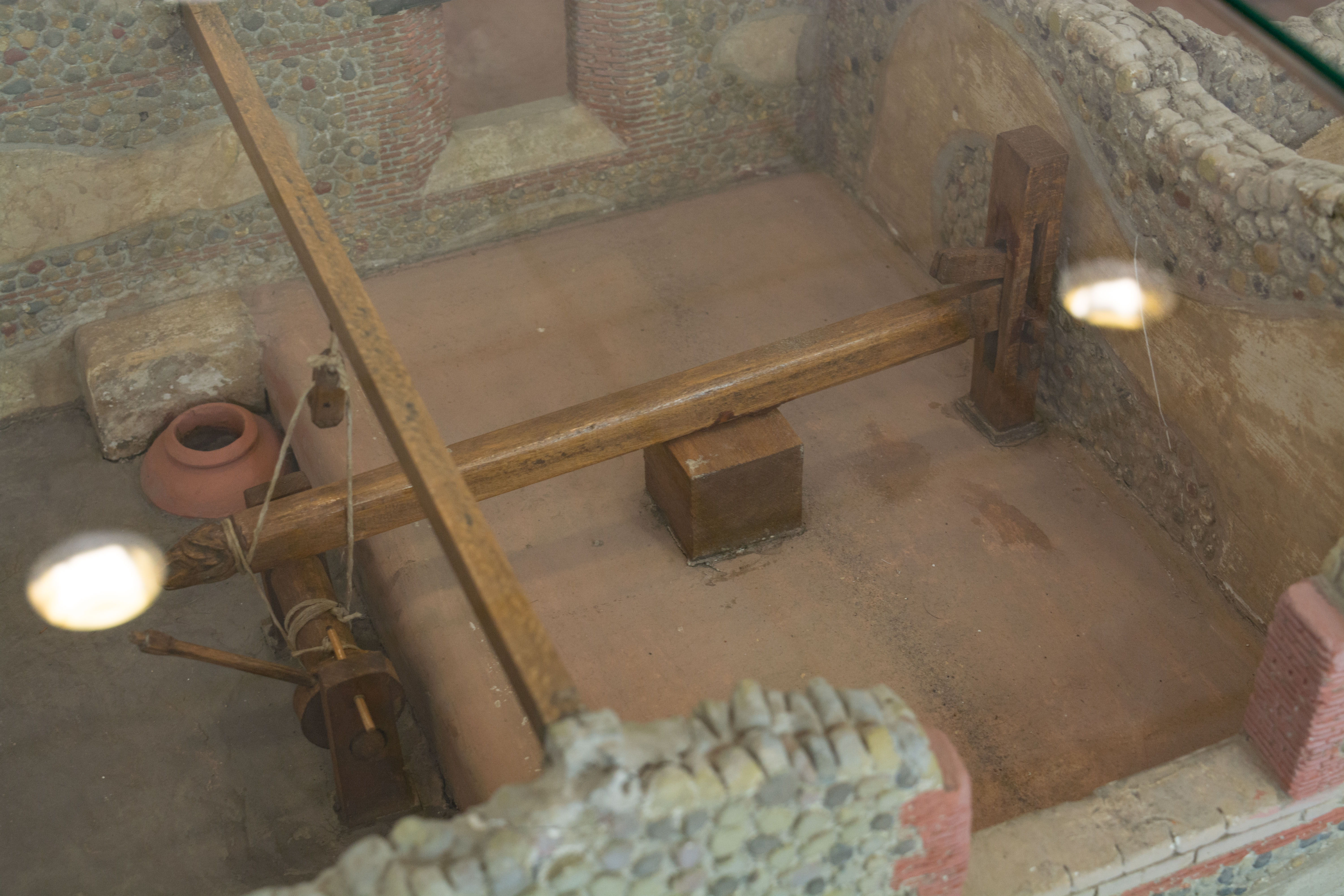
And the stone grinder, used to make flour, is represented here too:
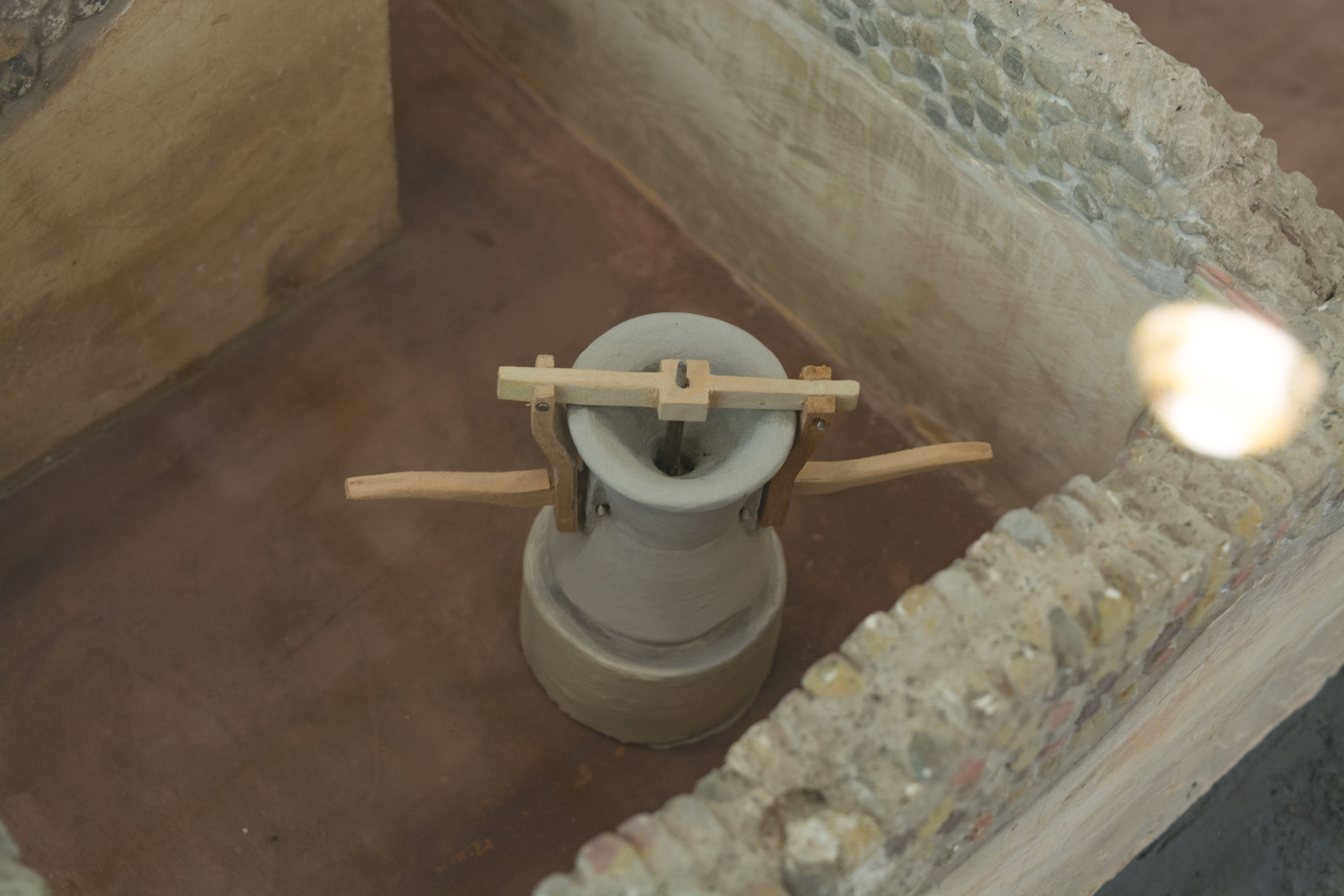
After taking some time to relax and enjoy the museum by ourselves, we got back on the bus and headed back to the hotel. After a magnificent dinner we all headed to bed early, because we knew that the next morning we would be climbing to the top of Mt Vesuvius. We all wanted to be well-rested for the day ahead of us tomorrow!
Check back soon for Day 7’s post, when I will cover our climb to the top of Vesuvius and our afternoon visit to the Villa at Oplontis, which was quite possibly the most impressive Roman house of the entire trip. See you soon!
